Lincomycin biosynthetic intermediates, method for preparation, and use thereof
Liu , et al.
U.S. patent number 10,590,159 [Application Number 15/575,630] was granted by the patent office on 2020-03-17 for lincomycin biosynthetic intermediates, method for preparation, and use thereof. This patent grant is currently assigned to Huzhou Center of Bio-Synthetic Innovation, Shanghai Institute of Organic Chemistry, Chinese Academy of Sciences, Shanghai Institute of Organic Chemistry, Chinese Academy of Sciences. The grantee listed for this patent is HUZHOU CENTER OF BIO-SYNTHETIC INNOVATION, SHANGHAI INSTITUTE OF ORGANIC CHEMISTRY, CHINESE ACADEMY OF SCIENCES, SHANGHAI INSTITUTE OF ORGANIC CHEMISTRY, CHINESE ACADEMY OF SCIENCES. Invention is credited to Wen Liu, Min Wang, Dongxiao Xu, Qinglin Zhang, Qunfei Zhao.

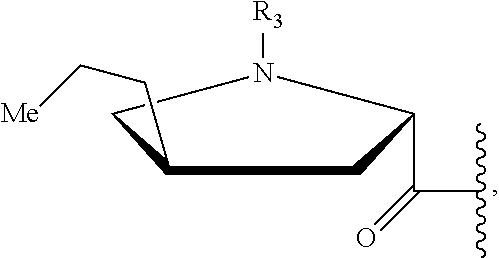
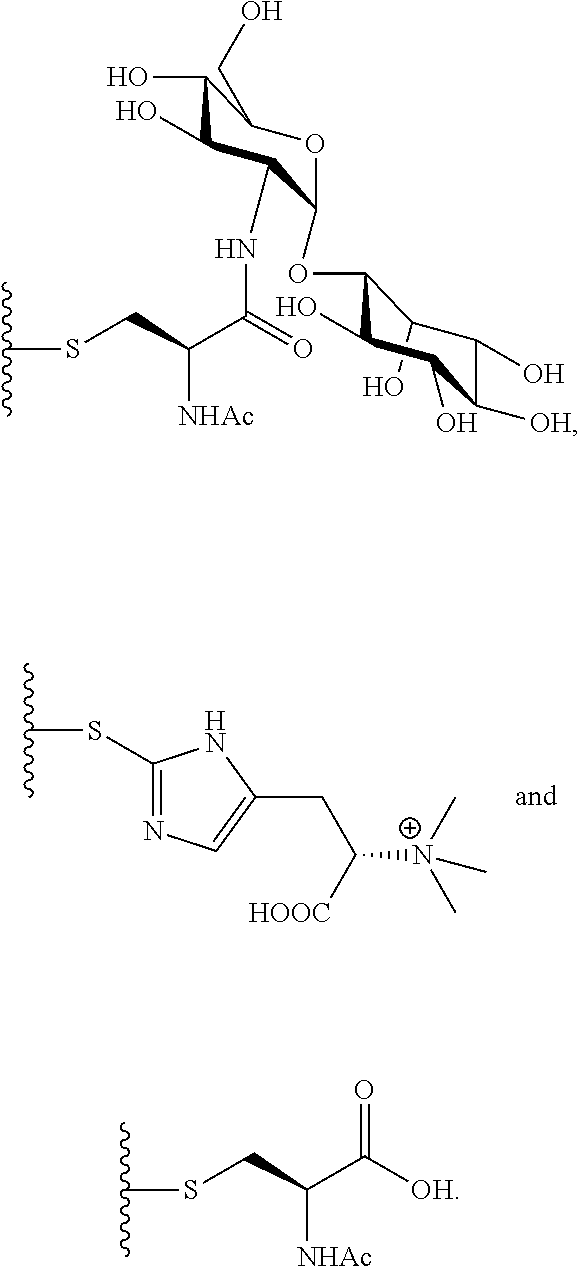
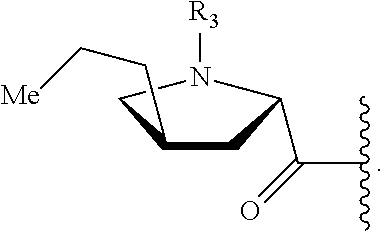



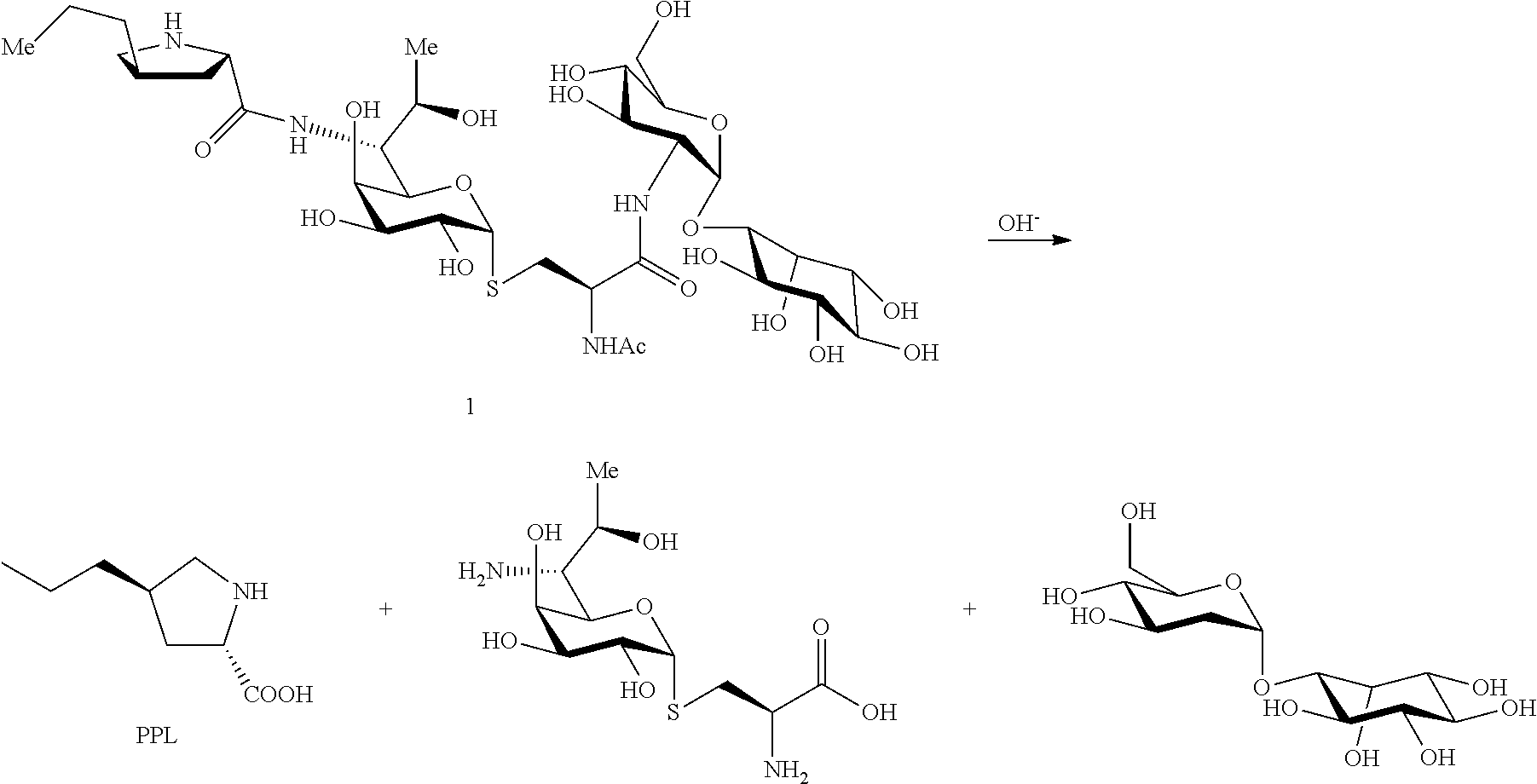
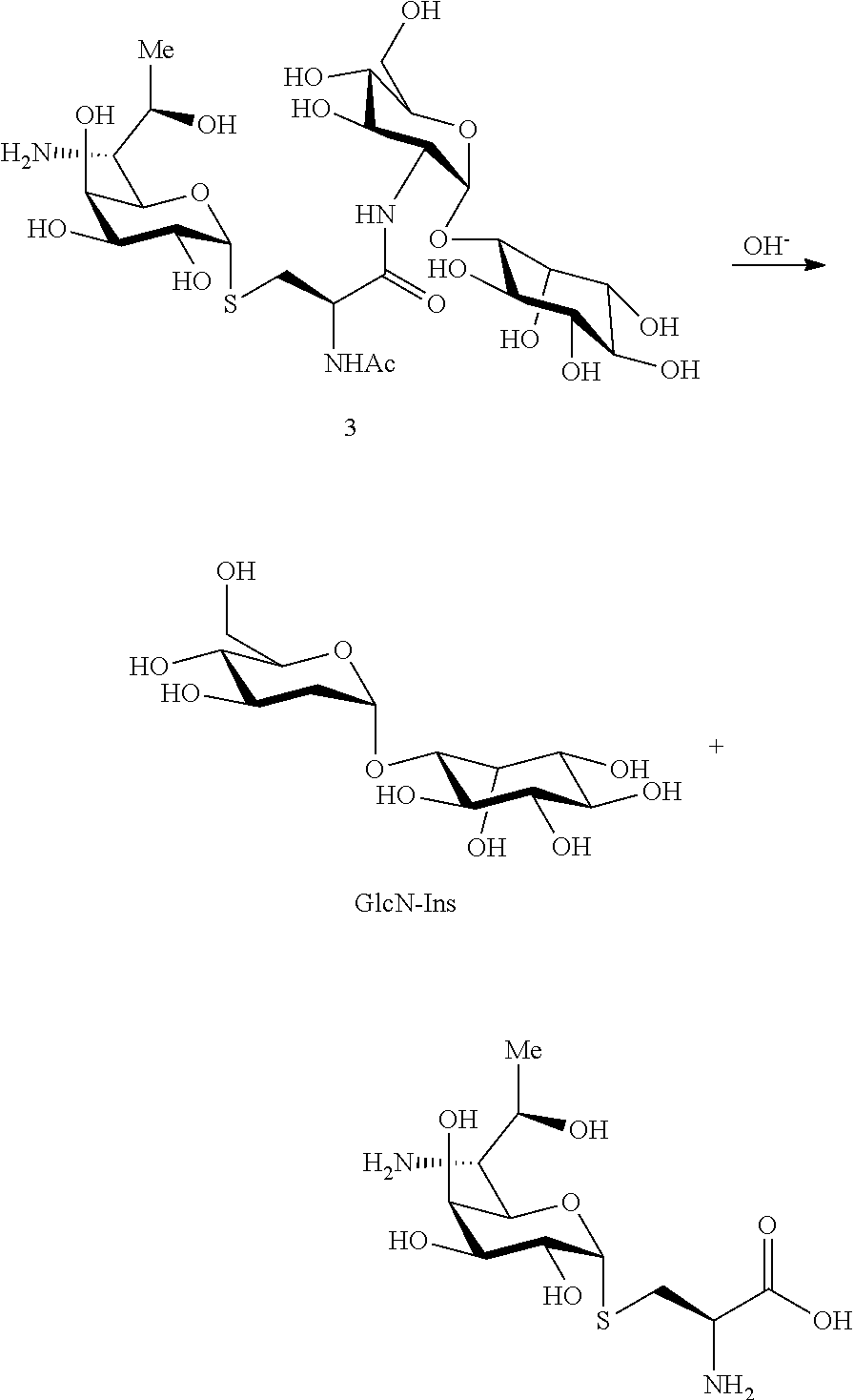
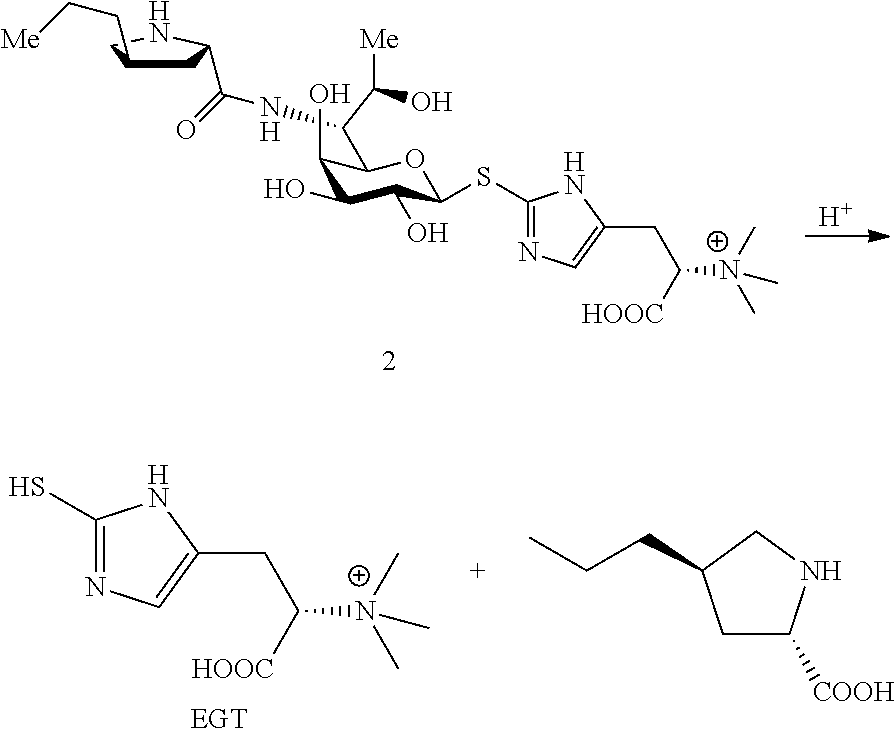

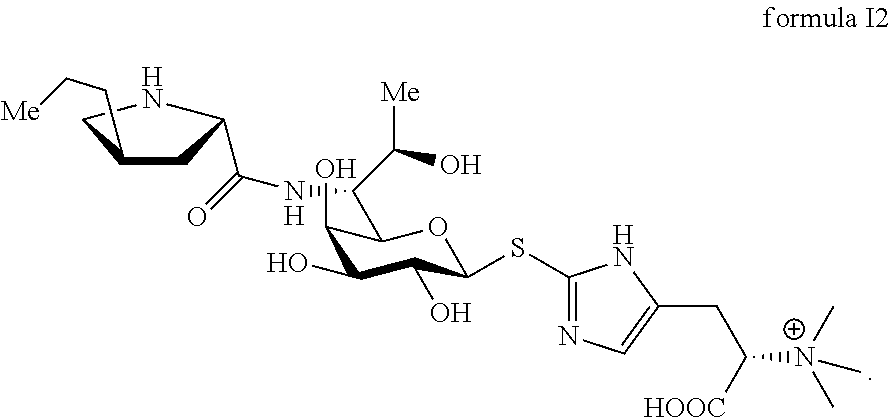
View All Diagrams
| United States Patent | 10,590,159 |
| Liu , et al. | March 17, 2020 |
Lincomycin biosynthetic intermediates, method for preparation, and use thereof
Abstract
Provided in the present invention are a class of Lincomycin biosynthetic intermediates and a preparation method and use thereof. Specifically provided are Lincomycin biosynthetic intermediates obtained from the genetic modification of a Lincomycin producing bacterium, and a method for the production thereof through fermentation and purification through separation.
| Inventors: | Liu; Wen (Shanghai, CN), Wang; Min (Shanghai, CN), Xu; Dongxiao (Shanghai, CN), Zhao; Qunfei (Zhejiang, CN), Zhang; Qinglin (Zhejiang, CN) | ||||||||||
|---|---|---|---|---|---|---|---|---|---|---|---|
| Applicant: |
|
||||||||||
| Assignee: | Shanghai Institute of Organic
Chemistry, Chinese Academy of Sciences (Shanghai,
CN) Huzhou Center of Bio-Synthetic Innovation, Shanghai Institute of Organic Chemistry, Chinese Academy of Sciences (Huzhou, Zhejiang, CN) |
||||||||||
| Family ID: | 55877098 | ||||||||||
| Appl. No.: | 15/575,630 | ||||||||||
| Filed: | November 6, 2015 | ||||||||||
| PCT Filed: | November 06, 2015 | ||||||||||
| PCT No.: | PCT/CN2015/094047 | ||||||||||
| 371(c)(1),(2),(4) Date: | May 02, 2018 | ||||||||||
| PCT Pub. No.: | WO2016/070849 | ||||||||||
| PCT Pub. Date: | May 12, 2016 |
Prior Publication Data
| Document Identifier | Publication Date | |
|---|---|---|
| US 20180251486 A1 | Sep 6, 2018 | |
Foreign Application Priority Data
| Nov 7, 2014 [CN] | 2014 1 0625571 | |||
| Current U.S. Class: | 1/1 |
| Current CPC Class: | C07H 1/00 (20130101); C07H 15/14 (20130101); C07H 17/02 (20130101); C07H 13/10 (20130101); A61P 31/10 (20180101); C07H 15/207 (20130101); A61P 31/04 (20180101); C07H 5/10 (20130101) |
| Current International Class: | C07H 17/02 (20060101); C07H 15/14 (20060101); C07H 1/00 (20060101); C07H 5/10 (20060101); C07H 13/10 (20060101); C07H 15/207 (20060101) |
| 102250991 | Nov 2011 | CN | |||
| 2010127645 | Nov 2010 | WO | |||
Other References
|
Q Zhao et al., "Metabolic coupling of two small-molecule thiols programs the biosynthesis of lincomycin A," Nature, vol. 518, No. 7537 (2015), 19 pages. cited by applicant . International Search Report for international appl. No. PCT/CN2015/094047, dated Feb. 6, 2016 (6 pages, including English translation). cited by applicant. |
Primary Examiner: Berry; Layla D
Attorney, Agent or Firm: Hamre, Schumann, Mueller & Larson, P.C.
Claims
We claim:
1. A microbial strain, wherein the microbial is Streptomycin lincolnensis, and in the strain, one or more genes selected from a group consisting of the following have been inactivated or knocked out: lmbE, lmbE3457, lmbV, mshA, mshC, lmbC, lmbD, lmbN, and lmbF.
2. The strain of claim 1, wherein in the strain, lmbE and/or lmbE3457 genes are inactivated or knocked out; and/or the lmbV, mshA and/or mshC genes are inactivated or knocked out; and/or the lmbC, lmbD and/or lmbN genes are inactivated or knocked out; and/or the lmbF gene are inactivated or knocked out.
3. A preparation method for a compound, wherein the method comprises: (a) fermenting a microbial strain, wherein the microbial is Streptomycin lincolnensis, and in the microbial strain, one or more genes selected from the group consisting of the following have been inactivated or knocked out: lmbE, lmbE3457, lmbV, mshA, mshC, lmbD, lmbN, and lmbF to obtain a fermentation product containing the compound; and (b) isolating the compound from the fermentation product; and optionally converting the compound into a pharmaceutically acceptable salt thereof, wherein the compound is represented by formula I: ##STR00016## wherein R.sub.1 is selected from a group consisting of H, halogen, C.sub.1-8alkyl, C.sub.2-8 alkenyl, C.sub.2-8 alkynyl, and ##STR00017## where R.sub.8 is selected from a group consisting of H, halogen and C.sub.1-8 alkyl; and R.sub.2 is selected from ##STR00018##
Description
FIELD OF THE INVENTION
The invention belongs to the field of medicine and biotechnology engineering, and specifically, the present invention involves a class of Lincomycin biosynthetic intermediates and a preparation method and use thereof.
BACKGROUND OF THE INVENTION
With the development of molecular biology in the past decade, especially on the basis of the cloning of antibiotic biosynthetic gene clusters and the elucidation of antibiotic biosynthetic pathways, metabolic engineering technology has been proposed and gradually developed to meet the needs of innovative microbial drug research. Currently, in a reasonable, directed and efficient pathway for improving antibiotic strain, principles and techniques of molecular genetics are used to specifically and appropriately modify the synthetic route of natural products in the "Cell Factory" to obtain recombinant strains, thus increasing production or optimize the components of fermentation. The key to the successful use of metabolic engineering is to recognize and understand the biosynthesis and regulatory mechanisms of complex antibiotics at gene and protein function level, which is the molecular and biochemical basis for the genetic manipulation of metabolic pathways in microorganisms. However, due to the lack of understanding of the biosynthesis mechanism of lincomycin, the application of this technology to improve industrial production strains of lincomycin is greatly limited.
Lincomycin and its chemically semi-synthesized downstream product, clindamycin, are widely used clinically for many years. Currently, lincomycin is mainly produced by fermentation of Streptomyces lincolnensis. Although Lincomycin has been used clinically for several decades, there are few studies on its biosynthetic pathway.
Chemical syntheses of structural analogues or derivatives of lincomycin have been continuously studied in the art. However, lincosamide antibiotics that have been clinically used so far only include lincomycin and clindamycin which is chemically semi-synthesized based on lincomycin. Production of intermediates or structural analogues of lincomycin biosynthesis by genetically engineered lincomycin-producing bacteria will be conducive to elucidate the biosynthesis pathways of lincomycin, thereby producing new lincosamide antibiotics using combinatorial bio-synthesis method based on the results of biosynthetic mechanism studies.
SUMMARY OF THE INVENTION
The present invention is to provide a type of intermediates of Lincomycin biosynthesis and a preparation method and use thereof.
The present invention is to provide a method for preparing n-propyl proline, disaccharide GlcN-Ins, Mycothiol or ergothioneine.
In a first aspect of the present invention, a compound, the structure of which is shown in formula I, and the pharmaceutically acceptable salts thereof are provided,
##STR00001##
wherein in the formula I, R.sub.1 is selected from a group consisting of H, halogen, C.sub.1-8alkyl, C.sub.2-8 alkenyl, C.sub.2-8 alkynyl and
##STR00002## wherein R.sub.3 is selected from a group consisting of H, halogen and C.sub.1-8 s alkyl;
R.sub.2 is selected from
##STR00003##
In another preferred embodiment, R.sub.1 is selected from a group consisting of H, C.sub.1-4 alkyl (such as methyl, ethyl, propyl and butyl) and
##STR00004##
In another preferred embodiment, R.sub.3 is selected from a group consisting of H, C.sub.1-4 alkyl (such as methyl, ethyl, propyl and butyl).
In another preferred embodiment, the structure of the compound is shown in formula Ia:
##STR00005##
Wherein, in formula Ia, R.sub.1 and R.sub.2 are described as above.
In another preferred embodiment, the compound has the structure selected from a group consisting of formula I1-I5:
##STR00006##
In a second aspect of the present invention, the use of the compound according to the first aspect of the present invention or a pharmaceutically acceptable salt thereof as the raw material for the preparation of n-propyl proline, disaccharide GlcN-Ins, Mycothiol or ergothione is provided.
In another preferred embodiment, the use further comprises: preparation a composition that inhibits the growth of microorganisms using the compound.
In another preferred embodiment, the composition inhibiting the growth of microorganisms includes a drug for treating microbial or bacterial infection.
In a third aspect of the present invention, a composition comprising a compound according to the first aspect of the present invention, or a pharmaceutically acceptable salt thereof, and an optional carrier is provided.
In another preferred example, the carrier includes water and an organic solvent.
In another preferred embodiment, the composition includes a pharmaceutical composition.
In another preferred embodiment, the carrier includes a pharmaceutically acceptable carrier.
In another preferred embodiment, the composition is a raw material composition for preparing n-propyl proline, disaccharide GlcN-Ins, Mycothiol or ergothioneine.
In a fourth aspect of the present invention, a microbial strain is provided, wherein the microbial is Streptomycin lincolnensis, and in the strain, one or more genes selected from a group consisting of the following have been inactivated or knocked out:
lmbE, lmbE3457, lmbV, mshA, mshC, lmbC, lmbD, lmbN, and lmbF.
In another preferred embodiment, in the strain, the lmbE and/or lmbE3457 gene have been inactivated or knocked out.
In another preferred embodiment, in the strain, the lmbV, mshA and/or mshC gene have been inactivated or knocked out.
In another preferred embodiment, in the strain, the lmbC, lmbD and/or lmbN gene have been inactivated or knocked out.
In another preferred embodiment, in the strain, the lmbF gene have been inactivated or knocked out.
In another preferred embodiment, the strain is used to prepare the compound of the first aspect of the present invention.
In a fifth aspect of the present invention, a method for the preparation of intermediate compound is provided, comprising:
(a) Using the compound of claim 1 or a pharmaceutically acceptable salt thereof as a raw material for hydrolysis reaction to produce the intermediate compound, wherein the compound or a pharmaceutically acceptable salt thereof is derived from a fermentation product of Streptomyces lincolnensis.
In another preferred embodiment, the intermediate compound is selected from a group consisting of n-propyl proline, disaccharide GlcN-Ins, Mycothiol, ergothioneine, or combinations thereof.
In another preferred example, the Streptomyces lincolnensis includes any one of the strains described in claim 4.
In another preferred embodiment, the method further comprises: separating the compound of claim 1 or a pharmaceutically acceptable salt thereof from the fermentation product of Streptomyces lincolnensis before step (a).
In another preferred example, in the step (a), one or more selected from a group consisting of the compounds of Formula I1, Formula I2, and Formula I5 are subjected to hydrolysis reaction to generate n-propyl proline compound.
In another preferred embodiment, the hydrolysis reaction is carried out under alkaline condition.
In another preferred embodiment, the method further comprises the step: fermenting the microbial strain according to the fourth aspect of the present invention to obtain the compound of Formula I1, Formula I2, and/or Formula I5.
In another preferred embodiment, the method further comprises the step: fermenting a Streptomyces lincolnensis mutant strain to obtain a compound of Formula I1, Formula I2, and/or Formula I5, wherein in the Streptomyces lincolnensis mutant strain, one or more of the genes selected from a group consisting of lmbE, lmbE3457, lmbV, mshA, mshC and lmbF gene are inactivated or knocked out.
In another preferred example, in the step (a), one or more selected from a group consisting of the compounds of Formula I1 and Formula I3 are subjected to hydrolysis reaction to generate disaccharide compound GlcN-Ins.
In another preferred embodiment, the method comprises the step: fermenting the microbial strain according to the fourth aspect of the present invention to obtain the compound of Formula I1 and/or Formula I3.
In another preferred embodiment, the hydrolysis reaction is carried out under alkaline condition.
In another preferred embodiment, the method further comprises the step: fermenting a Streptomyces lincolnensis mutant strain to obtain a compound of Formula I1 and/or Formula I3, wherein in the Streptomyces lincolnensis mutant strain, one or more of the genes selected from a group consisting of lmbE, lmbE3457, lmbC, lmbD and lmbN gene are inactivated or knocked out.
In another preferred example, in the step (a), one or more selected from a group consisting of the compounds of Formula I2 and Formula I4 are subjected to hydrolysis reaction to generate ergothioneine.
In another preferred embodiment, the method comprises the step: fermenting the microbial strain according to claim 4 to obtain the compound of Formula I2 and/or Formula I4.
In another preferred embodiment, the hydrolysis reaction is carried out under acidic condition.
In another preferred embodiment, the method further comprises the step: fermenting a Streptomyces lincolnensis mutant strain to obtain a compound of Formula I2 and/or Formula I4, wherein in the Streptomyces lincolnensis mutant strain, one or more of the genes selected from a group consisting of lmbV, mshA, mshC, lmbC, lmbD and lmbN gene are inactivated or knocked out.
In the sixth aspect of the present invention, a method for the preparation of Mycohiol is provided, comprising:
(1) Preparing Disaccharide Compound GlcN-Ins
Using the compound of claim 1 or a pharmaceutically acceptable salt thereof as a raw material for hydrolysis reaction to produce the disaccharide compound GlcN-Ins;
(2) Chemically Synthesizing Mycothiol from GlcN-Ins.
In the seventh aspect of the present invention, a preparation method for compound 1 of the first aspect of the present invention is provided, which comprises following steps:
(a) fermenting the strain of the fourth aspect of the present invention to produce the compound of the first aspect of the present invention; and
(b) isolating the compound of the first aspect of the invention from the fermentation product; and optionally converting the compound into a pharmaceutically acceptable salt thereof.
According to the eighth aspect of the present invention, a method for non-therapeutically inhibiting the growth of microorganisms or killing microorganisms in vitro is provided, comprising the step of using the compound according to the first aspect of the present invention or its pharmaceutically acceptable salt in a place in need thereof.
In the ninth aspect of the present invention, a method of preparing pharmaceutical composition is provided, which comprises the following step: mixing the compound of the first aspect of the present invention and a pharmaceutically acceptable carrier to form the pharmaceutical composition.
It should be understood that, in the present invention, each of the technical features specifically described above and below (such as those in the Examples) can be combined with each other, thereby constituting new or preferred technical solutions which need not be specified again herein.
DESCRIPTION OF THE DRAWINGS
The following figures are intended to illustrate specific embodiments of the present invention and are not intended to limit the scope of the present invention.
FIG. 1 shows the results of electrophoresis of an in frame knockout mutant of a lincomycin-producing strain. FIG. 1a, lmbE knockout mutant; FIG. 1b, lmbE-E3457 double knockout mutant; FIG. 1c, lmbV knockout mutant: FIG. 1d, mshA knockout mutant; FIG. 1e, lmbC knockout mutant; FIG. 1f, lmbD knockout mutant; FIG. 1g, lmbF knockout mutant.
FIG. 2 shows the results of HPLC-MS detection of the fermentation broth of the in frame knockout mutant of a lincomycin-producing strain, showing the production of lincomycin A and compounds 1-5 in each mutant.
FIG. 3 shows the results of NMR analysis of compound 1, FIG. 3a, 1H NMR spectrum; FIG. 3b, 13C NMR spectrum; FIG. 3c, DEPT135 NMR spectrum; FIG. 3d, COSY NMR spectrum; FIG. 3e, HSQC NMR spectrum; FIG. 3f, HMBC NMR spectrum; FIG. 3g, NOESY NMR spectrum.
FIG. 4 shows the results of NMR analysis of compound 2, FIG. 4a, 1H NMR spectrum; FIG. 4b, 13C NMR spectrum; FIG. 4c, DEPT135 NMR spectrum; FIG. 4d, COSY NMR spectrum; FIG. 4e, HSQC NMR spectrum; FIG. 4f, HMBC NMR spectrum; FIG. 4g, NOESY NMR spectrum.
FIG. 5 shows the results of NMR analysis of compound 3. FIG. 5a, 1H NMR spectrum; FIG. 5b, 13C NMR spectrum; FIG. 5c, DEPT135 NMR spectrum; FIG. 5d, COSY NMR spectrum; FIG. 5e, HSQC NMR spectrum; FIG. 5f, HMBC NMR 50 spectrum; FIG. 5g, NOESY NMR spectrum.
FIG. 6 shows the results of NMR analysis of compound 4. FIG. 6a, 1H NMR spectrum; FIG. 6b, 13C NMR spectrum; FIG. 6c, DEPT135 NMR spectrum; FIG. 6d, COSY NMR spectrum; FIG. 6e, HSQC NMR spectrum; FIG. 6f, HMBC NMR spectrum; FIG. 6g, NOESY NMR spectrum.
FIG. 7 shows the results of NMR analysis of compound 5. FIG. 7a, 1H NMR spectrum; FIG. 7b, 13C NMR spectrum; FIG. 7c, DEPT135 NMR spectrum; FIG. 7d, COSY NMR spectrum; FIG. 7e, HSQC NMR spectrum; FIG. 7f, HMBC NMR spectrum; FIG. 7g, NOESY NMR spectrum.
FIG. 8 shows the results of NMR analysis of n-propyl proline, FIG. 8a, 1H NMR spectrum; FIG. 8b, 13C NMR spectrum; FIG. 8c, DEPT135 NMR spectrum; FIG. 8d, COSY NMR spectrum; FIG. 8e, HSQC NMR spectrum; FIG. 8f, HMBC NMR spectrum; FIG. 8g, NOESY NMR spectrum.
FIG. 9 shows the results of NMR analysis of the disaccharide compound GlcN-Ins, FIG. 9a, 1H NMR spectrum; FIG. 9b, 13C NMR spectrum.
FIG. 10 shows NMR analysis of ergothioneine, 1H NMR spectrum.
EMBODIMENTS FOR CARRYING OUT THE INVENTION
After extensive and intensive studies, the present inventors obtained a mutant strain of Streptomycin lincolnensis by cloning of a lincomycin biosynthetic gene cluster and gene knockout. The in vitro biochemical activity of the proteins related to the biosynthesis of lincomycin was studied. The biosynthesis mechanism of lincomycin was studied in vitro and in vivo. Surprisingly, it was discovered that certain strains of Streptomycin lincolnensis mutants produced new compounds, and then the compounds were isolated and identified through extensive fermentation. The present invention is completed on this basis.
Active Ingredients
As used herein, the terms "active ingredient of the present invention", "compound of the present invention" and "lincomycin biosynthesis intermediate of the present invention" are used interchangeably and refer to lincomycin biosynthesis intermediate such as compounds of formula I.
It should be understood that the term also comprises the crystal forms, pharmaceutically acceptable salts, hydrates or solvates of the compound of the present invention.
In a preferred embodiments of the present invention, the term "C.sub.1-8 alkyl" refers to linear or branched alkyl with 1 to 8 carbon atoms, such as methyl, ethyl, propyl, isopropyl, butyl, isobutyl, sec-butyl, tert-butyl, or similar groups.
In a preferred embodiment of the present invention, the term "C.sub.2-8 alkenyl" refers to a straight or branched alkenyl group having 2-8 carbon atoms such as ethenyl, propenyl, 1,2-butenyl, 2,3-butenyl, butadienyl, or similar groups.
In a preferred embodiment of the present invention, the term "C.sub.2-8 alkynyl" refers to an alkynyl group having 2 to 8 carbon atoms, e.g., ethynyl, propynyl, iso-alkynyl group, butynyl group, alkynyl isobutyl, sec-butynyl, t-butynyl group, or the like.
In a preferred embodiment of the present invention, the term "halogen" refers to F, Cl, Br and I.
As used herein, the term "pharmaceutically acceptable salt" refers to a salts suitable for use in pharmaceutics formed by the compound of the present invention with an acid or base. The pharmaceutically acceptable salt includes inorganic and organic salt. A preferred type of salt is a salt formed by the compound of the present invention and acid. A salt can be formed from a cation and a charged group (e.g., an amino group) on a compound of the present invention. Suitable cations include hydrogen ions, sodium ions, 50 potassium ions, magnesium ions, calcium ions, and ammonium ions. Bases suitable for salt formation include, but are not limited to, hydroxides of alkali metal and alkaline earth metal (such as NaOH, KOH), oxides of alkali metal and alkaline earth metal, carbonates of alkali metal and alkaline earth metal (such as Na.sub.2CO.sub.3), ammonia, and so on.
In a preferred embodiment of the present invention, the compound structure is as follows:
##STR00007##
The compound of the present invention can be used as a structural analog for preparing other lincosamide antibiotics and used to produce downstream products such as n-propyl proline, disaccharide compound GlcN-Ins, and/or ergothioneine through hydrolysis.
In a preferred embodiment of the invention, n-propylproline is prepared by hydrolysis of compound 1, 2 or 5.
In a preferred embodiment of the present invention, the process for preparing n-propylproline (PPL) is as follows:
##STR00008## In a preferred embodiment of the present invention, the disaccharide compound GlcN-Ins is prepared by hydrolysis of compound 1 or 3. GlcN-Ins can be used as a raw material to synthesize Mycothiol (the chemical synthesis method refer to: Org. Lett. 6, 365-368, 2004; Org. Lett. 12, 2630-2633, 2010).
In a preferred embodiment of the present invention, the disaccharide compound GlcN-Ins is prepared by the following steps:
##STR00009##
In a preferred embodiment of the invention, erythrothioneine is prepared by hydrolysis of compound 2 or 4.
In a preferred embodiment of the present invention, the erythrothioneine is prepared by the following steps:
##STR00010##
Starting Strain
As used herein, the term "starting strain of the present invention" or "starting microorganism of the present invention" refers to Streptomycin lincolnensis with the number NRRL ISP-5355. The starting strain of the present invention is stored in the Agricultural Research Service Culture Collection (NRRL), numbered Streptomycin lincolnensis NRRL ISP-5355. It should be understood that the starting strain includes not only the strain numbered Streptomycin lincolnensis NRRL ISP-5355 but also its derivative strains.
Engineered Strains
The invention also provides engineered strains that can be used to produce the compounds of the invention.
In a preferred embodiment of the present invention, several mutant strains of Streptomycin lincolnensis that produce the lincomycin biosynthesis intermediate of the present invention are provided.
Preparation of Active Ingredients
The present invention provides a method for preparing a compound of formula I, comprising the steps of:
Fermenting the genetically modified strain of Streptomycin lincolnensis;
Extracting the compound of formula I from the culture medium.
The strains are discarded by centrifugation, and the supernatant liquid is adsorbed by macroporous resin, washed with distilled water, and then soaked in methanol. The macroporous resin was removed by filtration. The filtrate is concentrated under vacuum and dried, and the obtained paste is firstly roughly separated on a gel column, further purified with HPLC preparation to give the desired product.
Functional Gene
As early as 1995, Peschke et al. obtained a 35 kb lincomycin biosynthesis cluster by chromosome walking in S. lincolnensis 78-11 using three lincomycin resistance genes IprA, lprB and llmC [Mol Microbiol. 1995, 16(6):1137-1156]. The Janata team in Czech also cloned a 38217-bp lincomycin biosynthetic gene cluster in a low-yield strain of lincomycin S. lincolnensis ATCC 25466 in 2008. By bioinformatics analysis, the gene cluster contains 30 reading frames (ORF), consisting of 27 putative biosynthetic and regulatory genes (lmb) and 3 resistance-associated genes (lmr). Heterologous expression in S. coelicolor M145 and S. coelicolor CH 999 confirms that the gene cluster includes a complete gene associated with lincomycin synthesis [Folia Microbiol. 2008, 53(5): 395-401]. However, when aligning each gene product with the known protein sequence by sequence analysis, it is found that for several genes, homologous proteins can not be found at all, thus being impossible to infer the function. Even if the possible functions can be inferred from the homologous protein comparison, the functions of most genes in the biosynthesis of lincomycin are still unknown.
Preferably, the lincomycin biosynthetic gene cluster involved in the present invention can be found in [Folia Microbiol. 2008, 53(5):395-401].
In a preferred embodiment of the present invention, the polynucleotide sequence of lmbE gene is as follows:
TABLE-US-00001 (SEQ ID NO.: 1) ATGACTCAGTGCCTGCTGACCGTCCACGCGCACCCGGACGACGAGGCCTC CCGCGGCGGCGCCACGGTCGCCCACTACACCGCGCAGGGCGTCCGCGCCG TCCTGGTCACCTGTACCGACGGCGGCGCCGGCGAGGTGCTCAACCCCGCC GTCACCGACGACTTCACCCCCGAACGGTTCGTCGCCGTCCGCAGCGCCGA ACTCGACGCCAGCGCACGGAACCTGGGCTACTCGGCCGTGCACCGGCTCG GCTACCGCGACTCCGGCATGGACGGCACGGCGGGCGGCGCCGAGGCCTTC GTACGGGCCCCGCTCGACGAGGCCGCCACCCGCCTCGCCCGGGTGATCGC GGACGAACGCCCCGACGTGGTGATCGGATACGGCACCAACCACACCCGCG ACCCGCACCCCGACCACATCCGCGCGAACGAAGTGCTGACGCGCGCCGTC GACCTCCTCGACCACACACCCGCCGTCTACCACATCGCCTTCTCGCGACG TCGCCACCGCGCCTTGCACCAGGCCTGCGTCGACAGCGGGGTGCCCAGCC CGTACGAGGGCGGCCTGAGCGCCCCGCCGGGCGCCTTCGACGACGAGTGG ATCACCACACTCGTCGACGTGACCAAGGGCGACGCCGTCGAGCGCAGGCT CGACGCGCTGCGCAGTCACGTGACCCAAGTACCGCCCGCCTCCGGCTGGT TCGCGCTGTCACCGCAGCAGCTGCGGGACGCCTTCCCGTACGAGGAGTAC ACCCGCGTCGGCGCCGCGCCCCGGGAAGCCGTGGTGCACGACCTGTTCAC CGCTCCCGCGTGA
In a preferred embodiment of the present invention, the polynucleotide sequence of lmbE3457 gene is as follows:
TABLE-US-00002 (SEQ ID NO.: 2) ATGGCCGTGCACGCCCACCCCGACGACGAGTCGAGCAAGGGCGCGGCCAC CATGGCGAAGTACGTGTCCGAGGGGGTGGACGTGCTGGTCGTGACCTGCA CGGGAGGGGAGCGCGGCTCCATCCTCAACCCCAAGCTCCAGGGGGACGCG TATATCGAGGAGCACATCCATGAGGTGCGCAAGAAGGAGATGGACGAGGC GAGAGAGATCCTCGGCGTCAAGCAGGAGTGGCTCGGGTTCGTCGACTCGG GCCTGCCCGAGGGGGACCCGCTGCCGCCGCTGCCGGAGGGCTGTTTCGCC CTGGAGGACGTCGACAAGGCGGCCGGTGAGCTGGTGAAGAAGATCCGCTC GTTCCGTCCCCAGGTGATCACCACCTACGACGAGAACGGCGGCTACCCGC ACCCCGACCACATCATGACCCACAAGATCTCGATGGTGGCGTTCGAGGGT GCCGCGGACACCGAGAAGTACCCGGAGCAGGAGTTCGGCCCCGCGTACCA GCCGCAGAAGATCTACTACAACCAGGGCTTCAACCGTGAGCGCACCGAGG CCCTGCACAACGCGCTGGTCGAGCGCGGCCTGGAGTCCCCCTACGGCGAC TGGCTCAAGCGCTGGGAGGAGTCCGGGATGCAGCAGCGGACGCTCACCAC GCACGTCCCGTGTGCCGAGTTCTACGAGATCCGCGACAAGGCCCTGATCG CCCACGCCACGCAGATCGACCCCGACGGCGGCTGGTTCCGGGTGCCGCTG GATCTCCAGAAGGAGGTCTGGCCGACCGAGGAGTACGAGCTCGCGAAGTC CCTCGTCGATACTTCCCTCCCCGAGGCGGACCTCTTTGCGGGCATCCGCG ACAATGCCTGA
In a preferred embodiment of the present invention, the polynucleotide sequence of lmbV gene is as follows:
TABLE-US-00003 (SEQ ID NO.: 3) TTGCAGCGCAAGGGACTGGCCCGGCTCGGGTCGGGTGTCACGGCACTGGC CGACGAGGGAAGACACCTGCGGGCCTGGCTCACGAGCGCCGACGCGGCGG CGTGGCGACGGCCCACACGCTGTGCGGAGTGGAACGTCCGGGACGTCGTC GCGCACCTGGCGAGCGGCGAGCTGTACAACCAGGCATGCGTGCACGACGA CATCGCCTCGCTCGGCGAGTGGGCCGACGACGAGGCGTACAACGTCGGCC AGGTGGAGATGCGCCGCCACCTGAGCCACCGCGACGTCTTCGCGGAGTGG GACGAGCGCCACCGGGACGTGGTGGCCGCCTGGGGGGCCATGGACCCGGC CGACCCGCTCACCACGAGCTGGGGACCGTACCTGGTCGGCCTGCAGGCGT GGCACATCGCGTCGGAGTACGCGACCCACGCCGACGACATCGGGGTCCCC GTCCCCGCGGAGCGGGCCGCCTCCCGGCTCGACTGGCGCCTCGCCTTCTC CCAGTACGCGGTCGAGGAGTGCGAGCTGGGCCTTACGGTCGAGCCCGCCG AGGGCGACAGTGTGCTCGTGCGGGACGGGGCCGGGGCCGGGGCCGAACTC GTACTGACCCGTGAGCAGTTCGTGGCCGCGGTCAGCGCCCGGCTGCCGTA CGACGCCGTCGCCGACGACCCCGCCGTTCACGCGCTGCTACGGCGCATGA CGGTGCTGGTGGGGCCGTGA
In a preferred embodiment of the present invention, the polynucleotide sequence of mshA gene is as follows:
TABLE-US-00004 (SEQ ID NO.: 4) GTGAGCCAGTACGTCAGCAGGCTCCAGCGTCGCTCCCAGGCCGCCACCCC CCGGCTGCGCCTGCACCGCCGCCCCCGCCGCGTCGCCATGCTCTCCGTGC ACACCTCGCCGCTGCACCAGCCGGGCACCGGCGACGCGGGCGGCATGAAC GTCTACATCGTGGAGCTCGCCCAGCGCCTCGCCGCGATCAACATCGAGGT GGAGATCTTCACGCGGGCGACCACCGGCGGACTCCCGCACTCGGTCGAGC TCGCCCCGGGCGTCCTCGTCCGGCATGTCGACGCCGGCCCGTACGAGGGC CTGGCCAAGGAGGAGCTGCCCGCGCAGCTGTGCGCCTTCACGCACGGCGT GATGCAGGCGTGGGCGGGCCACCGCCCCGGCTACTACGACCTGGTGCACT CGCACTACTGGCTTTCCGGCCACGTCGGCTGGCTCGCCGCCCAGCGCTGG GGCACCCCCCTGGTGCACGCCATGCACACCATGGCCAAGGTCAAGAACGC CAACCTGGCCGACGGCGACACCCCCGAGCCCGCCGCCCGTGTCATCGGCG AGACCCAGATCGTCGCCGCAGCGGACCGCCTCATCGCCAACACCGCCGAG GAGCGCGACGAACTCGTACGGCACTACGCCGCCGACCCCGACAAGGTCGC GGTCGTGCACCCCGGCGTGAACCTCGACCGCTTCCGCCCCGCCGACGGCC GCGCGGCCGCCCGCGCCCGCCTCGGGCTGCCCCAGGACGCCCTGATCCCG CTGTTCGCGGGCCGCATCCAGCCCCTGAAGGCCCCCGACGTGCTCCTGCG CGCCGTGGCGGTCCTCCTGGACGAACGCCCCGACCTGCGCTCCCGCCTCC TCGTCCCGGTCGTCGGCGGTCTCAGCGGCAGCGGCCTCGCCAAGCCGGAG GGCCTCCAGAAGCTGGCCTCCCGCCTCGGTATCGCGGACGTCGTACGGTT CCACCCGCCCGTCGGGCAGGAGCAGCTCGCCGACTGGTTCCGGGCCGCCT CCGTGCTCGTCATGCCGTCGTACAGCGAGTCCTTCGGACTGGTCGCCATA GAGGCGCAGGCGGCCGGCACCCCCGTGCTCGCGGCCGCGGTCGGCGGACT CCCGGTCGCCGTCCGCGACGGGCAGACCGGTTTCCTCGTACGAGGGCACA ATCCCGCCGACTACGCGCGCGTGCTGCGCGACTTCGCCGACAGCCCCGAG CTCGCGCCCCGCATGGGCGAGGCCGCCGCCCGGCACGCCGAGTTCTTCGG CTGGGACACCGCGGCCGCCGCCACCGCCGACGTCTACACGGCCGCGACCC AGTCGCACCGCCGTCACGTACGCTCCCACCATGGGTGA
In a preferred embodiment of the present invention, the polynucleotide sequence of mshC gene is as follows:
TABLE-US-00005 (SEQ ID NO.: 5) ATGCATGCCTGGCCCGCTTCCGAGGTCCCCGCCCTGCCTGGTCAGGGCCG CGACCTGAGGATCCACGACACCGCGACCGGCGGCCTCGTCACCCTCACCC CCGGTCCCGTCGCCCGTATCTACGTCTGCGGCATCACGCCGTACGACGCG ACCCACATCGGTCACGCGGCGACCTACAACGCGTTCGACCTCGTGCAGCG CGTGTGGCTCGACACCAAGCGGCAGGTCCACTACGTCCAGAACGTCACCG ACGTCGACGATCCGCTCCTGGAGCGGGCACAGCGCGACGCCATCGACTGG GTCGCCCTCGCCGAGAAGGAGACCGCCCTCTTCCGCGAGGACATGACCGC CCTGCGGATGCTGCCCCCGCGGCACTACATCGGCGCGGTCGAGGCGATAC CCGGCATCGTGCCGCTCGTCGAGCGGCTGCGGGACGCGGGCGCCGCGTAC GAACTCGAAGGGGACGTGTACTTCTCCGTCGAGTCCGATCCGCACTTCGG CGAGGTCTCCGGCCTCGACGCCGCCGCCATGCGGCTGCTGTCCGCCGAGC GCGGCGGCGACCCCGAGCGGCCCGGCAAGAAGAACCCGCTCGACCCGATG CTGTGGATGGCCGCCCGCGAGGGCGAGCCCAGCTGGGACGGCGCCTCGCT GGGGCGCGGCCGGCCGGGCTGGCACATCGAGTGCGTCGCGATCGCCCTCG ACCACCTCGGGATGGGCTTCGACGTCCAGGGCGGCGGCTCCGACCTCGCC TTCCCGCACCACGAGATGGGCGCCTCGCACGCCCAGGCGCTGACCGGCGA GTTCCCCATGGCCACGGCGTACGTCCACGCCGGCATGGTCGCCCTCCACG GCGAGAAGATGTCCAAGTCCAAGGGCAACCTGGTCTTCGTGTCGCAGCTG CGCCGCGAGGGCGTCGACCCCGCCGCCATACGGCTCGCGCTGCTCGCCCA CCACTACCGGGCCGACTGGGAGTGGACCGACCAGGTGCTGCGGGACGCCG TCGACCGCCTCGGCCGCTGGCGTGCCGCGGTCTCCCGGCCCGACGGCCCG TCCGCCGAGGCCCTCGTCGAGGAGATCCGCAAGGCGCTCGCCGACGACCT GGACGCCCCGGCCGCCCTGGCCGCGGTCGACCGCTGGGCCGCCTCGCAGG AGGAGCACGGCGGCACCGACATCGGCGCGCCGGGCGTGGTGACACGAGCG GTGGACGCGCTGTTGGGCGTGGCCCTGTGA
In a preferred embodiment of the present invention, the polynucleotide sequence of lmbC gene is as follows:
TABLE-US-00006 (SEQ ID NO.: 6) ATGTCGTCCTCCGTTCGACTCTCCACACTCCTCGCCTCGGCCGCCGAGGC GAGGCCCGAGGCCCCCGCCGTCCTGGGGGAGACCCGGCTCCCGGTCACCT ATGGGGAGCTGGCCGCGCGGGCGGGCGGCATCCAGGCCGCCCTGGCAGGC CTGGGGGTGCGCGCCGGTGACCGGGTAGCGCTGCTGTCCGGGCGGACCGA CGCGGACGCCGTGGCCGCGGTGCACGCGATCCTGGCCGCGGGCGCCGTGT ACGTGCCGCTCGACGCCGCGTCGCCGCCCGCGCGGTGGGCTTCGGTGAGC CGGGTCTGCGCGCCCACCGCCGTGGTGGGCGAACGCGCGCTGCTCGACCG GTTCGCCGCCGCCGTACCGGGGCCGCGGCGGCTCGCCCTGCCATCGGACG GGGACGAGCTGCCCGCGGGCCGCCTCGACCCCGTCCGGAGCGACGGCACC GATGTCGCGTACCTGCTCACCACCTCCGGCTCCACCGGCGTTCCCAAGTG CGTGGCCCACACCGGTGCGGGCGCCGTCGCCTTCCTGGAGTGGATGGTCG GCGCGTTCCCGGTGGGCGGCGACGATGTGTTCGCCTGCCACGCCCCGCTG CACTTCGACGTGTCGGTGGCCTCGGTGCTCGGCTCCGCGCTGGGCGGCGC GGCCCTGGCCCCGGTGCCCCGTGAACTGTCCGGGTTTCCCGTCGAGCTGG CCACCTGGATCGCCGAACGCGCCGTCACCGTATGGCTCTCCGTGCCCTAT CCGCTCGCCCGCCTGTCCGGACTGGAGGAGCGGGCCGCGCGTGAGCGCCT CGCCACCTTGAGGACGGTCGTGTTCGCCGGTGACGTCTTTCCGCACCAGC GGCTCGCCGCACTGATGCGCTGCGCGCCCGGGGCCCGGTTCCTCAACATC TACGGCCCGACCGAGACCAACGGCTGTACGTACGAGGTCGTGGACGCCCC GCCCGCCGGCCCCGTGCCCATCGGCCGGCCCGTCGAGTGCGCCGAGTGCT GGGTCGAGGACGACGACGGGCGGCCGGTCGACGCGGTGGGGTCGGTGGGT GAACTCGTCGTCGCGGGGCCCACGGTGGCCGCCGGATACTGGGGCGTCGA GGGGCACGGAGCCGAGCGGTTCCGCACGGGGGAGACCTGTCCGGGCGGCC GGGCCTACGCCACCGGGGACCAGGTCCGCGTCCTGCCCGGGGGCCGGTAC GCCTTCCTCGGCCGCATGGACAACATGATCAAGATGCGCGGGCAGCGGTT CGAGCTGGAGGAGGTGGAGAACGCTGTACGGCTCGCTCCCGGCGTCGAGG ACTGCTGCGTGGTGAAGGTGGACGTCCGCGACGATCACTCCCGCCTCCTC GCCGTCGTGGTCGGGCCCGGCGCCGGCGACCCGCGCACCCTGCGCGAGCA CTGCCTGACCAGGCTGCCGTCGTGGGCGGTGCCGCACCGGTTCCTCACGG CCGCCGCGCTGCCCCTGGGCTCCACCGGCAAGGTGGACCGCCGCGCGCTC AGGGAGGAACTCGTCACACGCGGGGAGTGA
In a preferred embodiment of the present invention, the polynucleotide sequence of lmbD gene is as follows:
TABLE-US-00007 (SEQ ID NO.: 7) ATGGCGGTATCACCCCAGTCGGTTCGGTTGCCGGAACACGCGCCGCA CTGCGAGATCGGCTGCGCGGCGAACGTGGCGAAGAGGGTCGGTGTCGACT TCCCGCGGCACGTGGCCGGGTCCCAGTGGGCGCTGCGCACCTTCGTCCGG GAGCCCGGCGACATCCCGCAGCCCATGCTGGACCGCACGCATCTGACGTT CGGCGCGCACGGCGAGGGCTGGCCCACCGCCCTCGCGGGGATCACGGACG GCACCGTGCACGACCGCCGGGTGGCGCGTTCGGAGCTCCCGGAGGTGCTG CGGGACGACCTCGCCCGGGGCGGCAGTCTGCTGTTCCTGGAGGACCGCGG CTGCCCATGGCTGCACTCCGCCGGCCCCGGGCTGCTGCCGCACACGGTGA CCCCGGACGGTGTCGACGCGGCCGGGGTCTGGCAGCTGATCGAGGGGCAC AGCTGGTGGGCGGGCCGGTACCCGATGGCGGAGGCCGACCTGCTGGCCGC GGCCTACCCGGACCCCGACCCGCACCATGTGGCGGGCCGGGTCCTGAGCC TGCGTCTGGCCCTGACGCCCGAGCGTCGCGCGGCCCTGGACGCCCTCGCC CTGGACCGGCTGCGGGACAGCGTGCGCGCCTACCTCACGGGGGGCGACGG CCGGCTCGACACCCCGGCGGGCACGCTGGTGTGGACGGACGGGCAGGCGG CGGTCGCGGAACTGCTGGACCGGCTGCGGGGCTGGGAGTACCTGTGCGCG CTCGCCGCCGACGACGGGGCCGGCGTCGAGCAGGGCATCGACATCGCCGT GGGCCGGTATCTGTTCCTGGGCCTGGCGGACGAGCTGGCCTACACGTCGT ACGCCCGCGCGGGCGCCCGGCGCCTGACCCGACGCCTCGGCGCTCTCGCG GACATCGGCGACGAACACCTCCCCGACGTGGTGTGGCAGCGGGCGTGGCG CAGCGCCCAGCGGTTCTACCGGTCGCTGCGCGCGGAGCACTTCGACGCCC TGTTGCACGACATCGACGCGGCGGGGGTGGCCGACGCCGCTTGTGCGCGC CGGCTCGCGGAGGTCCTGTAG
In a preferred embodiment of the present invention, the polynucleotide sequence of lmbN gene is as follows:
TABLE-US-00008 (SEQ ID NO.: 8) GTGAGCACTCTGGACGAGGTCCTCGCCCTGCTCCGCACCATCGCGCC GAGCGGCGACGAGACCGAACTCACCGCCGACACCCTCCTGTTCAGCTCCG GCCTGCTCGACAGTCTCGCCCTGGAGGAGCTGCACGTCGCCATCGAGGAG CGCTGGGCGCCCATCCCACCCATGGAACTGGCGCGGGCGAACTTCGACAC CCCGGCCGCCATCGCCGCGACGGTGGCCCGTATCACCCATGAGGAGACCC CTGTGAGTGTTGTGAGGAACCTCCTGTCCGACTCGGGCCGGCTGACCGCC GACCTCGCACCGGACGCTATCGAGCGCGGTGCGCAGCTGCTCTTCGACAC CTGGCACGCCGGCGGCACCACCCTGTCCTGCGGCAACGGCGGCTCGGCCT CGACCGCCTCCCACTTCGCCGCCGACCTCGCCAAGCTCACCATCGTGCCC GGACAGCGCCGCATGCGGACGCTGTGCCTGAACGACAACGCCTCCGCGTT CTCGGCGTGGACCAACGACGAGGGCTTCCCCGTCGTCTACCGGGAGCAGG CCGAGCCCTGGCTGGAGCCCACCGCCACTCTGGTCGCGTTCTCCGTGCAC GGCGGCTCCCGCGGGGGCGAAGTGTCGGCGAACCTGCCCGCCGTCGCCCG CCTCGCCAAGGAACGCGGCGCCGCCGTGGTCGCGGTCACCGGCTTCGACG GCGGCGCCCTCGGCGACCTCGCGGACGTCCACATCAACATCCCGCACGCC ACCGAGCCCGTGGCGACCCCGCTGATCGAGTCGCTGCACGTCCTCGTCCA CCACGCCCTGTGCGTCGGCGCACGCGCCCTGATCCTGGAGAAGGCGGGGG AGCCGGCATGA
In a preferred embodiment of the present invention, the polynucleotide sequence of lmbF gene is as follows:
TABLE-US-00009 (SEQ ID NO.: 9) ATGACCGCCACGGCGAGCGGCGCGCAGACCGCCGCACCGGAACGGCT CACCGACGACGGCTGGCTGATCCGGCGCACATCCGTCGACACCGTCCGCC CCTTCGACGACCCGAGCGCCCAGTGGATGCTGGACCGCGCCCAGGCCCGT CTGCCGCTGTACCTGCTGCACGTCGCCGACCACGCGGAGGCCACGCCGCC CGGACTGCGCGAGGCCCTGCACGCCCAGGACGCGGCCCCCTGCGACGGCC TGCTGTTCTCCCAGTACGGCCTGCCGGAGCTGCGCCGGCGGCTCGACGCC TGGCTCGCCGCCGACGAGGAGTGGGACACCGCGGCGGAGCCGCTCGTCAG CGTCGCGTGGTCGGGCACCGGCGCGGCCATCTTCGACCTGCTGCGCATGC TCAAGGACGGCCGCCCGGGCCCCAGCGCCGTGCTGCTGCCGCGCCCCGGG TGGGGATATGACATGTCGGTGCGCGACACCGGACACGTACCGGTGAGTTA CGAGGTGCCCCCCGAGTCCCCGCACGGCCCGGACCCCGCGCACCTGGAGG AGGCGTGGCAGCGGTGCCGCAGCGAGGGCCTCGACGTCGCCTGCATCCTC ATCAACCCGCAGCACAACCCGTGGGGCGGCAACTGGACCCCCGAGTTCCT CGCCGCCGTCGCCGCCCTCGCCGAACGTGAGCGAGTGCCCGTCCTGGTGG ACAACGCCTTCTACGGGCTGACCGCCGAGGACGTGCGCCCCACCAGCGCG GTCCGGCTCCTCGGCCATCTCGTCGGCCAGGAACTCCTGGTGTCGGTGCG CAGCCTGAGCAAGCAGTTCGCGTGCAGCGGCTGGGCCCTGGGAGCCGTCG CGGGCAGCCCGGGTCTGGTCTCGGCGTACTCCGGCCGCTGGCGCTGTCTG CGGGAGCCGACCGCGGGCTTCCGCGCCCAGGCGGCGATGGCGGCCTGGCT CGGGGGCGCCGAACCCGAGCGCTTCACCCGGCGCCGCCGATCCGAGGCCA CCCGGCACGCCAGGCTCCTGCGCACCACACTGCGCGCGGCGGGGCTGCCC GACGACGCCGTCCTGCACCACGGCGGCGCCCCCTTCACCCTGCTGCGGCC CCCGGGCGGCAGCACGGTCGAGGAGGTGCGCGAGCAGACCGTCGTGCGGC ACGGCGTCCTGCTCGGCCTGGAGCGGGACGCGCGCGAACGGCCGTGGTTC AAGGTCTGGCTGGGCCGGGACAGCAGCGTCTTCGAACCCGCGGCGCGGGC CCTCGGCGACGCCGCGGCCGAGTGGCGGTACCGGTGA
Pharmaceutical Composition and Administration Thereof
The compound of the present invention has excellent bacteriostatic (antibacterial) activity and thus can be used as an anti-bacterial agent (or antibiotics), and its properties is beneficial to form injections.
The compounds of the present invention can be administered to mammals (e.g, humans) and can be administered orally, rectally, parenterally (intravenously, intramuscularly or subcutaneously), topically, and the like. The compounds can be administrated alone, or in combination with any other pharmaceutically acceptable compounds. It should be pointed out that the compound of the present invention can be administrated in mixture.
Solid dosage forms for oral administration include capsules, tablets, pills, powders and granules. In these solid dosage forms, the active compounds are mixed with at least one conventional inert excipient (or carrier), such as sodium citrate or CaHPO.sub.4, or mixed with any of the following components: (a) fillers or compatibilizer, for example, starch, lactose, sucrose, glucose, mannitol and silicic acid; (b) binders, for example, hydroxymethyl cellulose, alginates, gelatin, polyvinylpyrrolidone, sucrose and arabic gum; (c) humectant, such as, glycerol; (d) disintegrating agents such as agar, calcium carbonate, potato starch or tapioca starch, alginic acid, certain composite silicates, and sodium carbonate; (e) dissolution-retarding agents, such as paraffin; (f) absorption accelerators, for example, quaternary ammonium compounds; (g) wetting agents, such as cetyl alcohol and glyceryl monostearate; (h) adsorbents, for example, kaolin; and (i) lubricants such as talc, stearin calcium, magnesium stearate, solid polyethylene glycol, sodium lauryl sulfate, or the mixtures thereof. In capsules, tablets and pills, the dosage forms may also contain buffering agents.
The solid dosage forms such as tablets, sugar pills, capsules, pills and granules can be prepared by using coating and shell materials, such as enteric coatings and any other materials known in the art. They can contain an opaque agent. The release of the active compounds or compounds in the compositions can be released in a delayed mode in a given portion of the digestive tract. Examples of the embedding components include polymers and waxes. If necessary, the active compounds and one or more above excipients can form microcapsules.
Liquid dosage forms for oral administration include pharmaceutically acceptable emulsions, solutions, suspensions, syrups or tinctures. In addition to the active compounds, the liquid dosage forms may contain any conventional inert diluents known in the art such as water or other solvents, solubilizers and emulsifiers, for example, ethanol, isopropanol, ethyl carbonate, ethyl acetate, propylene glycol, 1, 3-butanediol, dimethyl formamide, as well as oil, in particular, cottonseed oil, peanut oil, corn germ oil, olive oil, castor oil and sesame oil, or the combination thereof.
Besides these inert diluents, the composition may also contain additives such as wetting agents, emulsifiers, and suspending agent, sweetener and perfume.
In addition to the active compounds, the suspension may contain suspending agent, for example, ethoxylated isooctadecanol, polyoxyethylene sorbitol and sorbitan esters, microcrystalline cellulose, methanol aluminum and agar, or the combination thereof.
The compositions for parenteral injection may comprise physiologically acceptable sterile aqueous or anhydrous solutions, dispersions, suspensions or emulsions, and sterile powders which can be re-dissolved into sterile injectable solutions or dispersions. Suitable aqueous and non-aqueous carriers, diluents, solvents or excipients include water, ethanol, 50 polyols and any suitable mixtures thereof.
The dosage forms for topical administration of compounds of the invention include ointments, powders, patches, aerosol, and inhalants. The active ingredients are mixed with physiologically acceptable carriers and any preservatives, buffers, or propellant if necessary, under sterile conditions.
Compounds of the present invention can be administrated alone, or in combination with other active ingredients (such as antibiotics).
When the pharmaceutical compositions are used, a safe and effective amount of compound of the present invention is applied to a mammal (such as human) in need of, wherein the dose of administration is a pharmaceutically effective dose. For an individual weighed 60 kg, the daily dose is usually 1-1000 mg, preferably 20-500 mg. Of course, the particular dose should also depend on various factors, such as the route of administration, healthy status of the individual, which are well within the skills of an experienced physician.
The Main Advantages of the Present Invention are:
1. The present invention provided a class of Lincomycin biosynthetic intermediates with noval structure (which can be referred as "lincomycin derivatives").
2. The present invention provides a genetic modification method for a lincolomycin-producing strain. High-yield production of a high-purity lincomycin biosynthesis intermediate product can be achieved through fermentation production, separation and purification of the strain.
3. Based on the lincomycin analogs of the present invention, it is not only conducive to the preparation of other structural analogues of lincosamide antibiotics, but also facilitates the production of a variety of extremely useful intermediate compounds (including n-propyl proline, disaccharide GlcN-Ins, and/or ergothioneine) by simple hydrolysis.
4. The preparation of the intermediate compound by the biological method of the present invention less affects environment and is of mild conditions and suitable for large-scale industrial production.
5. The method of the present invention not only can conveniently prepare a variety of useful intermediate compounds, but also avoids the use of expensive and complex full-chemical synthesis, and therefore has low cost and other comprehensive advantages and application prospects.
The present invention will be further illustrated below with reference to the specific examples. It should be understood that these examples are only to illustrate the invention but not to limit the scope of the invention. The experimental methods with no specific conditions described in the following examples are generally performed under the conventional conditions (for example, according to J. Sambrook et al., Molecular Cloning: A Laboratory Manual (New York: Cold Spring Harbor Laboratory Press, 1989), or according to the manufacturer's instructions. Unless indicated otherwise, parts and percentage are calculated by weight.
Unless otherwise defined, the technical terms and scientific terminology used herein are of the same meanings as with that familiar to all to those skilled in the art. In addition, any methods and materials similar or equal to that recorded can be applied in the present invention. The preferred embodiments and the materials described herein are for demonstration purposes only and are not intended to limit the scope of the present invention.
Example 1 Construction of in Frame Knockout Mutant of Lincomycin
1. Construction of a Recombinant Plasmid for in Frame Knockout
Primer Design:
The primer sequence for the left arm DNA fragment of the PCR clone lmbE gene is as follows:
TABLE-US-00010 (SEQ ID NO.: 10) Primer 1: 5'-TATGAATTCCACCTTCACCACGCAGCAGTCC-3' (SEQ ID NO.: 11) Primer 2: 5'-TATTCTAGACCTTCCCGTACGAGGAGTACAC-3'
The primer sequence for the right arm DNA fragment of the PCR clone lmbE gene is as follows:
TABLE-US-00011 (SEQ ID NO.: 12) Primer 3: 5'-TATTCTAGACGAACCGTTCGGGGGTGAAGTC-3' (SEQ ID NO.: 13) Primer 4: 5'-TATAAGCTTCCCGTTGCACACGACGTTTCAC-3'
The primer sequence for the left arm DNA fragment of the PCR clone lmbE3457 gene is as follows:
TABLE-US-00012 (SEQ ID NO.: 14) Primer 5: 5'-TATGAATTCCTGTTCACCTCCTACGGCGAC-3' (SEQ ID NO.: 15) Primer 6: 5'-TATTCTAGAATCCGCGACAAGGCCCTGATC-3'
The primer sequence for the right arm DNA fragment of the PCR clone lmbE3457 gene is as follows:
TABLE-US-00013 (SEQ ID NO.: 16) Primer 7: 5'-TATTCTAGAGCGGATCTTCTTCACCAGCTC-3' (SEQ ID NO.: 17) Primer 8: 5'-TATAAGCTTCGCCACATCGCCGAATGGAAC-3'
The primer sequence for the left arm DNA fragment of the PCR clone lmbV gene is as follows:
TABLE-US-00014 (SEQ ID NO.: 18) Primer 9: 5'-TATGAATTCGACGACGCTGACGTAGTGCAGG-3' (SEQ ID NO.: 19) Primer 10: 5'-TATTCTAGACTGACCCGTGAGCAGTTCGTGG-3'
The primer sequence for the right arm DNA fragment of the PCR clone lmbV gene is as follows:
TABLE-US-00015 (SEQ ID NO.: 20) Primer 11: 5'-TATTCTAGAGATGTCGTCGTGCACGCATGCC-3' (SEQ ID NO.: 21) Primer 12 5'-TATAAGCTTGTCACCGCGGTTGAGCTCGATC-3'
The primer sequence for the left arm DNA fragment of the PCR clone mshA gene is as follows:
TABLE-US-00016 (SEQ ID NO.: 22) Primer 13: 5'-TATGAATTCCGGTTCGATCTCCACACCGACCAC-3' (SEQ ID NO.: 23) Primer 14: 5'-TATTCTAGACTTGGCCATGGTGTGCATGGCGTG-3'
The primer sequence for the right arm DNA fragment of the PCR clone mshA gene is as follows:
TABLE-US-00017 (SEQ ID NO.: 24) Primer 15: 5'-TATTCTAGACAGACCGGTTTCCTCGTACGAGGG-3' (SEQ ID NO.: 25) Primer 16: 5'-TATAAGCTTCATGGTCACCCGGCAGGAAGTCAC-3'
The primer sequence for the left arm DNA fragment of the PCR clone lmbC gene is as follows:
TABLE-US-00018 (SEQ ID NO.: 26) Primer 17: 5'-TATGAATTCGGATGTACCGTTTCCTGGACC-3' (SEQ ID NO.: 27) Primer 18: 5'-TATTCTAGAGGAGGTGGAGAACGCTGTACG-3'
The primer sequence for the right arm DNA fragment of the PCR clone lmbC gene is as follows:
TABLE-US-00019 (SEQ ID NO.: 28) Primer 19: 5'-TATTCTAGAGGAGGTGGAGAACGCTGTACG-3' (SEQ ID NO.: 29) Primer 20: 5'-TATAAGCTTCAGTCACGTGACCCAAGTACCG-3'
The primer sequence for the left arm DNA fragment of the PCR clone lmbD gene is as follows:
TABLE-US-00020 (SEQ ID NO.: 30) Primer 21: 5'-TATGAATTCCCTGATGCTCCTGTACACCAGC-3' (SEQ ID NO.: 31) Primer 22: 5'-TATTCTAGAGTCCTCCAGGAACAGCAGACTG-3'
The primer sequence for the right arm DNA fragment of the PCR clone lmbD gene is as follows:
TABLE-US-00021 (SEQ ID NO.: 32) Primer 23: 5'-TATTCTAGACGGTATCTGTTCCTGGGCCTGG-3' (SEQ ID NO.: 33) Primer 24: 5'-TATAAGCTTGAACGGTACGTGCAACTCCTCG-3'
PCR Amplification
The PCR amplification was performed by using the total DNA of Lincomycin producing strain, Streptomycin lincolnensis NRRL ISP-5355 as the template, and using the above left and right arm DNA fragments specific primers of lincE, lmbE3457, lmbV, mshA, and lmbC, to amplify the upstream and downstream sequence, the left and right arm DNA amplified fragments.
Construction of Recombinant Shuttle Plasmid
The left and right arm fragments of each gene were separated by gel electrophoresis, and the gel was recovered and purified. The left arm fragments were digested with EcoRI and XbaI, and the downstream fragments were digested with XbaI and HindIII. After the fragments were collected, they were together inserted into pKC1139 plasmid which was treated with restriction enzymes HindIII and EcoRI (a temperature-sensitive E. coli-Streptomyces shuttle plasmids, see: U.S. Pat. No. 5,955,319), thus forming recombinant plasmid shuttle plasmids of each gene.
The recombinant plasmid was transformed into the conventional E. coli DH5a, and a monoclonal colony was picked into LB culture medium (containing an alabamamycin antibiotic 100 .mu.g/ml) and cultured overnight until the bacteria solution turned to dense. The recombinant plasmid was extracted and verified by enzyme digestion. Commercial sequencing was performed. The results showed that the recombinant shuttle plasmid was constructed correctly.
2. Construction and Screening of in Frame Knockout Mutants
The correct recombinant shuttle plasmid was transformed into the conventional methylation-deleted E. coli ET12567 (see U.S. Pat. Nos. 7,326,782 and 7,105,491) and the lmbE, lmbV, mshA, lmbC and lmbD gene knockout plasmid was introduced into the Streptomycin lincolnensis NRRL ISP-5355 strain by conjugative transfer. The lmbE3457 knockout plasmid was introduced into the lmbE knockout mutant to construct the lmbE-E3457 double knockout mutant. The amylin-resistant zygote was selected and the zygote was grown at 37.degree. C. to homologously recombine the upstream or downstream fragment of the plasmid gene with the homologous fragment on the chromosome. The zygote grown well at 37.degree. C. were inoculated into TSB liquid medium without any antibiotics (purchased from SIGMA-ALDRICH) and incubated at 30.degree. C. for two days. A small amount of bacteria was taken and inoculated in TSB liquid medium without antibiotics. After 5 to 6 rounds, the bacteria solution was streaked on MS solid medium and single colonies that lost apramycin resistance were picked. DNA was extracted and genotypes were determined by PCR.
In the present example, a mutant strain of the biosynthesis gene cluster of lincomycin was successfully constructed by the above method. The experimental results are shown in FIG. 1.
FIG. 1a is the verification result of the lmbE knockout mutant. From the electrophoretogram of Figure a, it can be seen that the lmbE gene in the lmbE knockout mutant was deleted by about 0.55 kb, indicating that the lmbE knockout mutant strain was successfully constructed in this Example.
FIG. 1b is the verification result of the lmbE-E3457 double knockout mutant. On the basis of the lmbE knockout mutant, lmbE3457 was further knocked out. From the electropherogram of figure b, it can see that the lmbE3457 gene was deleted by about 0.34 kb in lmbE-E3457 double knockout mutant, indicating that the lmbE-E3457 double knockout mutant was successfully constructed in this example.
FIG. 1c is the verification result of the lmbV knockout mutant. From the electrophoretogram of Figure c, it can be seen that the lmbV gene in the lmbV knockout mutant was deleted by about 0.4 kb, indicating that the lmbV knockout mutant strain was successfully constructed in this Example.
FIG. 1d is the verification result of the mshA knockout mutant. From the electrophoretogram of Figure d, it can be seen that the mshA gene in the mshA knockout mutant was deleted by about 0.6 kb, indicating that the mshA knockout mutant strain was successfully constructed in this Example.
FIG. 1e is the verification result of the lmbC knockout mutant. From the electrophoretogram of Figure e, it can be seen that the lmbC gene in the lmbC knockout mutant was deleted by about 0.7 kb, indicating that the lmbC knockout mutant strain was successfully constructed in this Example.
FIG. 1f is the verification result of the lmbD knockout mutant. From the electrophoretogram of Figure f, it can be seen that the lmbD gene in the lmbD knockout mutant was deleted by about 0.4 kb, indicating that the lmbD knockout mutant strain was successfully constructed in this Example.
FIG. 1g is the verification result of the lmbF knockout mutant. From the electrophoretogram of Figure g, it can be seen that the lmbF gene in the lmbF knockout mutant was deleted by about 0.5 kb, indicating that the lmbF knockout mutant strain was successfully constructed in this Example.
Example 2 Fermentation of Recombinant Strains
1. Seed Activation and Culture
Spores of recombinant strain preserved at -80.degree. C. were spread on MS medium (mannitol 2%, soybean meal 2%, agar 2%) and cultured at 30.degree. C. for 7 days. Approximately 1 cm.sup.2 of agar block containing spores and hyphae was cut out and inoculated into the primary fermentation medium (Soluble starch 20.0 g, Soy flour 10.0 g, Corn steep liquor 30.0 g, Glucose 10.0 g, (NH.sub.4).sub.2SO.sub.4 1.5 g, CaCO.sub.3 5.0 g, pH=7.0), cultured at 30.degree. C. 250 rpm for 40 hours to obtain a seed culture solution for the next experiment.
2. Enlarge Cultivation
The seed culture solution was inoculated into the fermentation medium at a seeding volume of 10% by volume (Glucose 100.0 g, Soy flour 25.0 g, Corn steep liquor 2.0 g, NaNO.sub.3 8.0 g, NaCl 5.0 g, (NH.sub.4).sub.2SO.sub.4 8.0 g, K.sub.2HPO.sub.4 0.2 g, CaCO.sub.3 8.0 g, pH=7.0), cultured at 30.degree. C., 250 rpm for 7 days, and the fermentation broth was harvested to obtain a crude product containing a structural analog of lincomycin, which was stored at low temperatures for detection and isolation of purified compounds.
Example 3 Detection of Fermentation Products
1 mL of fermentation broth was filtered and centrifuged at 12,000 r/min for 10 min. 300 .mu.L of fermentation broth was pipetted and three-fold diluted with 600 .mu.L mobile phase (5 mM ammonium acetate:methanol=40:60). The sample was fully vortex shaken with vortex, and allowed to stand for 24 h at 4.degree. C., centrifuged at 12,000 r/min for 10 min, 50 and a small amount of supernatant was taken for HPLC and LC-MS detection and analysis. The detection conditions were as follows: Agilent ZORBAX SB-C18 (5 .mu.m 4.6.times.250 mm) was used as column; 210 nm detection wavelength; the mobile phase was 5 mM ammonium acetate solution:methanol (40:60); constant gradient elution for 17 min; the flow rate was 0.6 mL/min; and the injection volume was 20 .mu.L.
The test results are shown in FIG. 2. It can be seen from the figure that compared with the wild type, the content of compound 1 in the fermentation product of the lmbE knockout mutant and the lmbE-E3457 double knockout mutant has significantly increased; The content of compound 2 in the fermentation product of the lmbV knockout mutant and the mshA knockout mutant has significantly increased; the content of compound 5 in the fermentation product of the lmbF knockout mutant has significantly increased; and the content of the compound 3, 4 in the fermentation product of the lmbC knockout mutant has increased. While the wild-type strain did not produce or produced only a trace amount of the above compounds.
Example 4 Isolation and Purification of Lincomycin Structural Analogs
The fermentation broth was centrifuged at 4000 rpm for 20 minutes and the supernatant was taken. Firstly, the macroporous resin XAD-2 was used to adsorb the fermentation broth of the mutant and eluted with methanol; then, the eluate was concentrated and separated on a Sephadex LH20 gel column, and the target compound-enriched tube was determined by TLC/LC-MS analysis; The C18 semi-preparative column was used for crude separation to obtain relatively pure compounds. Finally, the compounds were further purified by Sephadex G10 gel column to obtain each target compound, and the structure of each target compound was identified.
FIG. 3 shows the results of NMR analysis of compound 1, FIG. 3a, 1H NMR spectrum; FIG. 3b, 13C NMR spectrum; FIG. 3c, DEPT135 NMR spectrum; FIG. 3d, COSY NMR spectrum; FIG. 3e, HSQC NMR spectrum; FIG. 3f, HMBC NMR spectrum; FIG. 3g, NOESY NMR spectrum. The structure of Compound 1 was identified based on the above spectra as shown in Formula I1.
##STR00011##
FIG. 4 shows the results of NMR analysis of compound 2, FIG. 4a, 1H NMR spectrum; FIG. 4b, 13C NMR spectrum; FIG. 4c, DEPT135 NMR spectrum; FIG. 4d, COSY NMR spectrum: FIG. 4e, HSQC NMR spectrum: FIG. 4f, HMBC NMR spectrum; FIG. 4g, NOESY NMR spectrum. The structure of Compound 2 was identified based on the above spectra as shown in Formula I2.
##STR00012##
FIG. 5 shows the results of NMR analysis of compound 3. FIG. 5a, 1H NMR spectrum; FIG. 5b, 13C NMR spectrum; FIG. 5c, DEPT135 NMR spectrum; FIG. 5d, COSY NMR spectrum; FIG. 5e, HSQC NMR spectrum; FIG. 5f, HMBC NMR spectrum; FIG. 5g, NOESY NMR spectrum. The structure of Compound 3 was identified based on the above spectra as shown in Formula I3.
##STR00013##
FIG. 6 shows the results of NMR analysis of compound 4. FIG. 6a, 1H NMR spectrum; FIG. 6b, 13C NMR spectrum; FIG. 6c, DEPT135 NMR spectrum; FIG. 6d, COSY NMR spectrum; FIG. 6e, HSQC NMR spectrum; FIG. 6f, HMBC NMR spectrum; FIG. 6g, NOESY NMR spectrum. The structure of Compound 4 was identified based on the above spectra as shown in Formula I4.
##STR00014##
FIG. 7 shows the results of NMR analysis of compound 5. FIG. 7a, 1H NMR spectrum; FIG. 7b, 13C NMR spectrum; FIG. 7c, DEPT135 NMR spectrum; FIG. 7d, COSY NMR spectrum; FIG. 7e, HSQC NMR spectrum; FIG. 7f, HMBC NMR spectrum; FIG. 7g, NOESY NMR spectrum. The structure of Compound 5 was identified based on the above spectra as shown in Formula I5.
##STR00015##
Example 5
Pharmaceutical Composition
TABLE-US-00022 Compound 20 g starch 140 g Microcrystalline cellulose 60 g
The above substances are mixed by conventional methods, and then filled into general gelatin capsules to obtain 1000 capsules.
Example 6 Production of Downstream Products Such as n-Propyl Proline, Disaccharide GlcN-Ins and Ergothioneine by Hydrolysis
N-propyl proline: 5 ml of an aqueous solutions of Compound 1, 2 or 5 (containing about 50 mg of starting material) were taken in a 25 ml round bottom flask, and 5N NaOH solution was added dropwise to pH=11, and heated to reflux for 3 h. After the reaction was completed by LC-MS, the reaction solvent was removed under vacuo. The system was dissolved in 1 ml water, and semi-preparative purifications were performed on a reversed-phase C18 column for twice. Conditions: H.sub.2O (5 mM)/CH.sub.3OH=80/20; 2 ml/min; 210 nm UV detection, and the obtained pure n-propyl proline was subjected to nuclear magnetic identification. The results are shown in FIG. 8. The identification results show that the n-propyl proline was successfully produced in this example.
Disaccharide GlcN-Ins: 5 ml of an aqueous solutions of Compound 1 or 3 (containing about 50 mg of starting material) were taken in a 25 ml round bottom flask, and 5N NaOH solution was added dropwise to pH=11, and heated to reflux for 3 h. After the reaction was completed by LC-MS, the reaction solvent was removed under vacuo. The system was dissolved in 1 ml water, and semi-preparative purifications were performed on a HIIIC column for twice. Conditions: H.sub.2O (10 mM)/CH3CN=25/75; 2 ml/min; differential detection, and the obtained GlcN-Ins was subjected to nuclear magnetic identification. The results are shown in FIG. 9. The identification results show that the disaccharide GlcN-Ins was successfully produced in this example. GlcN-Ins can be used as the raw material of Mycothiol chemical synthesis (The chemical synthesis method refers to: Org. Lett. 6, 365-368, 2004; Org. Lett. 12, 2630-2633, 2010).
Ergothioneine: 5 ml of an aqueous solutions of Compound 2 or 4 (containing about 50 mg of starting material) were taken in a 25 ml round bottom flask, and 5N HCl solution was added dropwise to pH=1, and heated to reflux for 3 h. After the reaction was completed by LC-MS, the reaction solvent was removed under vacuo. The system was dissolved in 1 ml water, and semi-preparative purifications were performed on a HIIIC column for twice. Conditions: H.sub.2O (10 mM)/CH3CN=28/72; 2 ml/min; 243 nm UV detection, and the obtained pure Ergothioneine was subjected to nuclear magnetic identification. The results are shown in FIG. 10. The identification results show that the Ergothioneine was successfully produced in this example.
All literatures mentioned in the present application are incorporated herein by reference, as though each one is individually incorporated by reference. Additionally, it should be understood that after reading the above teachings, those skilled in the art can make various changes and modifications to the present invention. These equivalents also fall within the scope defined by the appended claims.
SEQUENCE LISTINGS
1
331813DNAStreptomyces lincolnens 1atgactcagt gcctgctgac cgtccacgcg cacccggacg acgaggcctc ccgcggcggc 60gccacggtcg cccactacac cgcgcagggc gtccgcgccg tcctggtcac ctgtaccgac 120ggcggcgccg gcgaggtgct caaccccgcc gtcaccgacg acttcacccc cgaacggttc 180gtcgccgtcc gcagcgccga actcgacgcc agcgcacgga acctgggcta ctcggccgtg 240caccggctcg gctaccgcga ctccggcatg gacggcacgg cgggcggcgc cgaggccttc 300gtacgggccc cgctcgacga ggccgccacc cgcctcgccc gggtgatcgc ggacgaacgc 360cccgacgtgg tgatcggata cggcaccaac cacacccgcg acccgcaccc cgaccacatc 420cgcgcgaacg aagtgctgac gcgcgccgtc gacctcctcg accacacacc cgccgtctac 480cacatcgcct tctcgcgacg tcgccaccgc gccttgcacc aggcctgcgt cgacagcggg 540gtgcccagcc cgtacgaggg cggcctgagc gccccgccgg gcgccttcga cgacgagtgg 600atcaccacac tcgtcgacgt gaccaagggc gacgccgtcg agcgcaggct cgacgcgctg 660cgcagtcacg tgacccaagt accgcccgcc tccggctggt tcgcgctgtc accgcagcag 720ctgcgggacg ccttcccgta cgaggagtac acccgcgtcg gcgccgcgcc ccgggaagcc 780gtggtgcacg acctgttcac cgctcccgcg tga 8132861DNAStreptomyces lincolnens 2atggccgtgc acgcccaccc cgacgacgag tcgagcaagg gcgcggccac catggcgaag 60tacgtgtccg agggggtgga cgtgctggtc gtgacctgca cgggagggga gcgcggctcc 120atcctcaacc ccaagctcca gggggacgcg tatatcgagg agcacatcca tgaggtgcgc 180aagaaggaga tggacgaggc gagagagatc ctcggcgtca agcaggagtg gctcgggttc 240gtcgactcgg gcctgcccga gggggacccg ctgccgccgc tgccggaggg ctgtttcgcc 300ctggaggacg tcgacaaggc ggccggtgag ctggtgaaga agatccgctc gttccgtccc 360caggtgatca ccacctacga cgagaacggc ggctacccgc accccgacca catcatgacc 420cacaagatct cgatggtggc gttcgagggt gccgcggaca ccgagaagta cccggagcag 480gagttcggcc ccgcgtacca gccgcagaag atctactaca accagggctt caaccgtgag 540cgcaccgagg ccctgcacaa cgcgctggtc gagcgcggcc tggagtcccc ctacggcgac 600tggctcaagc gctgggagga gtccgggatg cagcagcgga cgctcaccac gcacgtcccg 660tgtgccgagt tctacgagat ccgcgacaag gccctgatcg cccacgccac gcagatcgac 720cccgacggcg gctggttccg ggtgccgctg gatctccaga aggaggtctg gccgaccgag 780gagtacgagc tcgcgaagtc cctcgtcgat acttccctcc ccgaggcgga cctctttgcg 840ggcatccgcg acaatgcctg a 8613720DNAStreptomyces lincolnens 3ttgcagcgca agggactggc ccggctcggg tcgggtgtca cggcactggc cgacgaggga 60agacacctgc gggcctggct cacgagcgcc gacgcggcgg cgtggcgacg gcccacacgc 120tgtgcggagt ggaacgtccg ggacgtcgtc gcgcacctgg cgagcggcga gctgtacaac 180caggcatgcg tgcacgacga catcgcctcg ctcggcgagt gggccgacga cgaggcgtac 240aacgtcggcc aggtggagat gcgccgccac ctgagccacc gcgacgtctt cgcggagtgg 300gacgagcgcc accgggacgt ggtggccgcc tggggggcca tggacccggc cgacccgctc 360accacgagct ggggaccgta cctggtcggc ctgcaggcgt ggcacatcgc gtcggagtac 420gcgacccacg ccgacgacat cggggtcccc gtccccgcgg agcgggccgc ctcccggctc 480gactggcgcc tcgccttctc ccagtacgcg gtcgaggagt gcgagctggg ccttacggtc 540gagcccgccg agggcgacag tgtgctcgtg cgggacgggg ccggggccgg ggccgaactc 600gtactgaccc gtgagcagtt cgtggccgcg gtcagcgccc ggctgccgta cgacgccgtc 660gccgacgacc ccgccgttca cgcgctgcta cggcgcatga cggtgctggt ggggccgtga 72041338DNAStreptomyces lincolnens 4gtgagccagt acgtcagcag gctccagcgt cgctcccagg ccgccacccc ccggctgcgc 60ctgcaccgcc gcccccgccg cgtcgccatg ctctccgtgc acacctcgcc gctgcaccag 120ccgggcaccg gcgacgcggg cggcatgaac gtctacatcg tggagctcgc ccagcgcctc 180gccgcgatca acatcgaggt ggagatcttc acgcgggcga ccaccggcgg actcccgcac 240tcggtcgagc tcgccccggg cgtcctcgtc cggcatgtcg acgccggccc gtacgagggc 300ctggccaagg aggagctgcc cgcgcagctg tgcgccttca cgcacggcgt gatgcaggcg 360tgggcgggcc accgccccgg ctactacgac ctggtgcact cgcactactg gctttccggc 420cacgtcggct ggctcgccgc ccagcgctgg ggcacccccc tggtgcacgc catgcacacc 480atggccaagg tcaagaacgc caacctggcc gacggcgaca cccccgagcc cgccgcccgt 540gtcatcggcg agacccagat cgtcgccgca gcggaccgcc tcatcgccaa caccgccgag 600gagcgcgacg aactcgtacg gcactacgcc gccgaccccg acaaggtcgc ggtcgtgcac 660cccggcgtga acctcgaccg cttccgcccc gccgacggcc gcgcggccgc ccgcgcccgc 720ctcgggctgc cccaggacgc cctgatcccg ctgttcgcgg gccgcatcca gcccctgaag 780gcccccgacg tgctcctgcg cgccgtggcg gtcctcctgg acgaacgccc cgacctgcgc 840tcccgcctcc tcgtcccggt cgtcggcggt ctcagcggca gcggcctcgc caagccggag 900ggcctccaga agctggcctc ccgcctcggt atcgcggacg tcgtacggtt ccacccgccc 960gtcgggcagg agcagctcgc cgactggttc cgggccgcct ccgtgctcgt catgccgtcg 1020tacagcgagt ccttcggact ggtcgccata gaggcgcagg cggccggcac ccccgtgctc 1080gcggccgcgg tcggcggact cccggtcgcc gtccgcgacg ggcagaccgg tttcctcgta 1140cgagggcaca atcccgccga ctacgcgcgc gtgctgcgcg acttcgccga cagccccgag 1200ctcgcgcccc gcatgggcga ggccgccgcc cggcacgccg agttcttcgg ctgggacacc 1260gcggccgccg ccaccgccga cgtctacacg gccgcgaccc agtcgcaccg ccgtcacgta 1320cgctcccacc atgggtga 133851230DNAStreptomyces lincolnens 5atgcatgcct ggcccgcttc cgaggtcccc gccctgcctg gtcagggccg cgacctgagg 60atccacgaca ccgcgaccgg cggcctcgtc accctcaccc ccggtcccgt cgcccgtatc 120tacgtctgcg gcatcacgcc gtacgacgcg acccacatcg gtcacgcggc gacctacaac 180gcgttcgacc tcgtgcagcg cgtgtggctc gacaccaagc ggcaggtcca ctacgtccag 240aacgtcaccg acgtcgacga tccgctcctg gagcgggcac agcgcgacgc catcgactgg 300gtcgccctcg ccgagaagga gaccgccctc ttccgcgagg acatgaccgc cctgcggatg 360ctgcccccgc ggcactacat cggcgcggtc gaggcgatac ccggcatcgt gccgctcgtc 420gagcggctgc gggacgcggg cgccgcgtac gaactcgaag gggacgtgta cttctccgtc 480gagtccgatc cgcacttcgg cgaggtctcc ggcctcgacg ccgccgccat gcggctgctg 540tccgccgagc gcggcggcga ccccgagcgg cccggcaaga agaacccgct cgacccgatg 600ctgtggatgg ccgcccgcga gggcgagccc agctgggacg gcgcctcgct ggggcgcggc 660cggccgggct ggcacatcga gtgcgtcgcg atcgccctcg accacctcgg gatgggcttc 720gacgtccagg gcggcggctc cgacctcgcc ttcccgcacc acgagatggg cgcctcgcac 780gcccaggcgc tgaccggcga gttccccatg gccacggcgt acgtccacgc cggcatggtc 840gccctccacg gcgagaagat gtccaagtcc aagggcaacc tggtcttcgt gtcgcagctg 900cgccgcgagg gcgtcgaccc cgccgccata cggctcgcgc tgctcgccca ccactaccgg 960gccgactggg agtggaccga ccaggtgctg cgggacgccg tcgaccgcct cggccgctgg 1020cgtgccgcgg tctcccggcc cgacggcccg tccgccgagg ccctcgtcga ggagatccgc 1080aaggcgctcg ccgacgacct ggacgccccg gccgccctgg ccgcggtcga ccgctgggcc 1140gcctcgcagg aggagcacgg cggcaccgac atcggcgcgc cgggcgtggt gacacgagcg 1200gtggacgcgc tgttgggcgt ggccctgtga 123061530DNAStreptomyces lincolnens 6atgtcgtcct ccgttcgact ctccacactc ctcgcctcgg ccgccgaggc gaggcccgag 60gcccccgccg tcctggggga gacccggctc ccggtcacct atggggagct ggccgcgcgg 120gcgggcggca tccaggccgc cctggcaggc ctgggggtgc gcgccggtga ccgggtagcg 180ctgctgtccg ggcggaccga cgcggacgcc gtggccgcgg tgcacgcgat cctggccgcg 240ggcgccgtgt acgtgccgct cgacgccgcg tcgccgcccg cgcggtgggc ttcggtgagc 300cgggtctgcg cgcccaccgc cgtggtgggc gaacgcgcgc tgctcgaccg gttcgccgcc 360gccgtaccgg ggccgcggcg gctcgccctg ccatcggacg gggacgagct gcccgcgggc 420cgcctcgacc ccgtccggag cgacggcacc gatgtcgcgt acctgctcac cacctccggc 480tccaccggcg ttcccaagtg cgtggcccac accggtgcgg gcgccgtcgc cttcctggag 540tggatggtcg gcgcgttccc ggtgggcggc gacgatgtgt tcgcctgcca cgccccgctg 600cacttcgacg tgtcggtggc ctcggtgctc ggctccgcgc tgggcggcgc ggccctggcc 660ccggtgcccc gtgaactgtc cgggtttccc gtcgagctgg ccacctggat cgccgaacgc 720gccgtcaccg tatggctctc cgtgccctat ccgctcgccc gcctgtccgg actggaggag 780cgggccgcgc gtgagcgcct cgccaccttg aggacggtcg tgttcgccgg tgacgtcttt 840ccgcaccagc ggctcgccgc actgatgcgc tgcgcgcccg gggcccggtt cctcaacatc 900tacggcccga ccgagaccaa cggctgtacg tacgaggtcg tggacgcccc gcccgccggc 960cccgtgccca tcggccggcc cgtcgagtgc gccgagtgct gggtcgagga cgacgacggg 1020cggccggtcg acgcggtggg gtcggtgggt gaactcgtcg tcgcggggcc cacggtggcc 1080gccggatact ggggcgtcga ggggcacgga gccgagcggt tccgcacggg ggagacctgt 1140ccgggcggcc gggcctacgc caccggggac caggtccgcg tcctgcccgg gggccggtac 1200gccttcctcg gccgcatgga caacatgatc aagatgcgcg ggcagcggtt cgagctggag 1260gaggtggaga acgctgtacg gctcgctccc ggcgtcgagg actgctgcgt ggtgaaggtg 1320gacgtccgcg acgatcactc ccgcctcctc gccgtcgtgg tcgggcccgg cgccggcgac 1380ccgcgcaccc tgcgcgagca ctgcctgacc aggctgccgt cgtgggcggt gccgcaccgg 1440ttcctcacgg ccgccgcgct gcccctgggc tccaccggca aggtggaccg ccgcgcgctc 1500agggaggaac tcgtcacacg cggggagtga 153071068DNAStreptomyces lincolnens 7atggcggtat caccccagtc ggttcggttg ccggaacacg cgccgcactg cgagatcggc 60tgcgcggcga acgtggcgaa gagggtcggt gtcgacttcc cgcggcacgt ggccgggtcc 120cagtgggcgc tgcgcacctt cgtccgggag cccggcgaca tcccgcagcc catgctggac 180cgcacgcatc tgacgttcgg cgcgcacggc gagggctggc ccaccgccct cgcggggatc 240acggacggca ccgtgcacga ccgccgggtg gcgcgttcgg agctcccgga ggtgctgcgg 300gacgacctcg cccggggcgg cagtctgctg ttcctggagg accgcggctg cccatggctg 360cactccgccg gccccgggct gctgccgcac acggtgaccc cggacggtgt cgacgcggcc 420ggggtctggc agctgatcga ggggcacagc tggtgggcgg gccggtaccc gatggcggag 480gccgacctgc tggccgcggc ctacccggac cccgacccgc accatgtggc gggccgggtc 540ctgagcctgc gtctggccct gacgcccgag cgtcgcgcgg ccctggacgc cctcgccctg 600gaccggctgc gggacagcgt gcgcgcctac ctcacggggg gcgacggccg gctcgacacc 660ccggcgggca cgctggtgtg gacggacggg caggcggcgg tcgcggaact gctggaccgg 720ctgcggggct gggagtacct gtgcgcgctc gccgccgacg acggggccgg cgtcgagcag 780ggcatcgaca tcgccgtggg ccggtatctg ttcctgggcc tggcggacga gctggcctac 840acgtcgtacg cccgcgcggg cgcccggcgc ctgacccgac gcctcggcgc tctcgcggac 900atcggcgacg aacacctccc cgacgtggtg tggcagcggg cgtggcgcag cgcccagcgg 960ttctaccggt cgctgcgcgc ggagcacttc gacgccctgt tgcacgacat cgacgcggcg 1020ggggtggccg acgccgcttg tgcgcgccgg ctcgcggagg tcctgtag 10688858DNAStreptomyces lincolnens 8gtgagcactc tggacgaggt cctcgccctg ctccgcacca tcgcgccgag cggcgacgag 60accgaactca ccgccgacac cctcctgttc agctccggcc tgctcgacag tctcgccctg 120gaggagctgc acgtcgccat cgaggagcgc tgggcgccca tcccacccat ggaactggcg 180cgggcgaact tcgacacccc ggccgccatc gccgcgacgg tggcccgtat cacccatgag 240gagacccctg tgagtgttgt gaggaacctc ctgtccgact cgggccggct gaccgccgac 300ctcgcaccgg acgctatcga gcgcggtgcg cagctgctct tcgacacctg gcacgccggc 360ggcaccaccc tgtcctgcgg caacggcggc tcggcctcga ccgcctccca cttcgccgcc 420gacctcgcca agctcaccat cgtgcccgga cagcgccgca tgcggacgct gtgcctgaac 480gacaacgcct ccgcgttctc ggcgtggacc aacgacgagg gcttccccgt cgtctaccgg 540gagcaggccg agccctggct ggagcccacc gccactctgg tcgcgttctc cgtgcacggc 600ggctcccgcg ggggcgaagt gtcggcgaac ctgcccgccg tcgcccgcct cgccaaggaa 660cgcggcgccg ccgtggtcgc ggtcaccggc ttcgacggcg gcgccctcgg cgacctcgcg 720gacgtccaca tcaacatccc gcacgccacc gagcccgtgg cgaccccgct gatcgagtcg 780ctgcacgtcc tcgtccacca cgccctgtgc gtcggcgcac gcgccctgat cctggagaag 840gcgggggagc cggcatga 85891284DNAStreptomyces lincolnens 9atgaccgcca cggcgagcgg cgcgcagacc gccgcaccgg aacggctcac cgacgacggc 60tggctgatcc ggcgcacatc cgtcgacacc gtccgcccct tcgacgaccc gagcgcccag 120tggatgctgg accgcgccca ggcccgtctg ccgctgtacc tgctgcacgt cgccgaccac 180gcggaggcca cgccgcccgg actgcgcgag gccctgcacg cccaggacgc ggccccctgc 240gacggcctgc tgttctccca gtacggcctg ccggagctgc gccggcggct cgacgcctgg 300ctcgccgccg acgaggagtg ggacaccgcg gcggagccgc tcgtcagcgt cgcgtggtcg 360ggcaccggcg cggccatctt cgacctgctg cgcatgctca aggacggccg cccgggcccc 420agcgccgtgc tgctgccgcg ccccgggtgg ggatatgaca tgtcggtgcg cgacaccgga 480cacgtaccgg tgagttacga ggtgcccccc gagtccccgc acggcccgga ccccgcgcac 540ctggaggagg cgtggcagcg gtgccgcagc gagggcctcg acgtcgcctg catcctcatc 600aacccgcagc acaacccgtg gggcggcaac tggacccccg agttcctcgc cgccgtcgcc 660gccctcgccg aacgtgagcg agtgcccgtc ctggtggaca acgccttcta cgggctgacc 720gccgaggacg tgcgccccac cagcgcggtc cggctcctcg gccatctcgt cggccaggaa 780ctcctggtgt cggtgcgcag cctgagcaag cagttcgcgt gcagcggctg ggccctggga 840gccgtcgcgg gcagcccggg tctggtctcg gcgtactccg gccgctggcg ctgtctgcgg 900gagccgaccg cgggcttccg cgcccaggcg gcgatggcgg cctggctcgg gggcgccgaa 960cccgagcgct tcacccggcg ccgccgatcc gaggccaccc ggcacgccag gctcctgcgc 1020accacactgc gcgcggcggg gctgcccgac gacgccgtcc tgcaccacgg cggcgccccc 1080ttcaccctgc tgcggccccc gggcggcagc acggtcgagg aggtgcgcga gcagaccgtc 1140gtgcggcacg gcgtcctgct cggcctggag cgggacgcgc gcgaacggcc gtggttcaag 1200gtctggctgg gccgggacag cagcgtcttc gaacccgcgg cgcgggccct cggcgacgcc 1260gcggccgagt ggcggtaccg gtga 12841031DNAArtificial sequencePolynucleotide 10tatgaattcc accttcacca cgcagcagtc c 311131DNAArtificial sequencePolynucleotide 11tattctagac cttcccgtac gaggagtaca c 311231DNAArtificial sequencePolynucleotide 12tattctagac gaaccgttcg ggggtgaagt c 311331DNAArtificial sequencePolynucleotide 13tataagcttc ccgttgcaca cgacgtttca c 311430DNAArtificial sequencePolynucleotide 14tatgaattcc tgttcacctc ctacggcgac 301530DNAArtificial sequencePolynucleotide 15tattctagaa tccgcgacaa ggccctgatc 301630DNAArtificial sequencePolynucleotide 16tattctagag cggatcttct tcaccagctc 301730DNAArtificial sequencePolynucleotide 17tataagcttc gccacatcgc cgaatggaac 301831DNAArtificial sequencePolynucleotide 18tatgaattcg acgacgctga cgtagtgcag g 311931DNAArtificial sequencePolynucleotide 19tattctagac tgacccgtga gcagttcgtg g 312031DNAArtificial sequencePolynucleotide 20tattctagag atgtcgtcgt gcacgcatgc c 312131DNAArtificial sequencePolynucleotide 21tataagcttg tcaccgcggt tgagctcgat c 312233DNAArtificial sequencePolynucleotide 22tatgaattcc ggttcgatct ccacaccgac cac 332333DNAArtificial sequencePolynucleotide 23tattctagac ttggccatgg tgtgcatggc gtg 332433DNAArtificial sequencePolynucleotide 24tattctagac agaccggttt cctcgtacga ggg 332533DNAArtificial sequencePolynucleotide 25tataagcttc atggtcaccc ggcaggaagt cac 332630DNAArtificial sequencePolynucleotide 26tatgaattcg gatgtaccgt ttcctggacc 302730DNAArtificial sequencePolynucleotide 27tattctagag gaggtggaga acgctgtacg 302830DNAArtificial sequencePolynucleotide 28tattctagac cgaccatcca ctccaggaag 302931DNAArtificial sequencePolynucleotide 29tataagcttc agtcacgtga cccaagtacc g 313031DNAArtificial sequencePolynucleotide 30tatgaattcc ctgatgctcc tgtacaccag c 313131DNAArtificial sequencePolynucleotide 31tattctagag tcctccagga acagcagact g 313231DNAArtificial sequencePolynucleotide 32tattctagac ggtatctgtt cctgggcctg g 313331DNAArtificial sequencePolynucleotide 33tataagcttg aacggtacgt gcaactcctc g 31
* * * * *
C00001

C00002

C00003

C00004

C00005

C00006

C00007

C00008

C00009

C00010

C00011

C00012

C00013

C00014

C00015
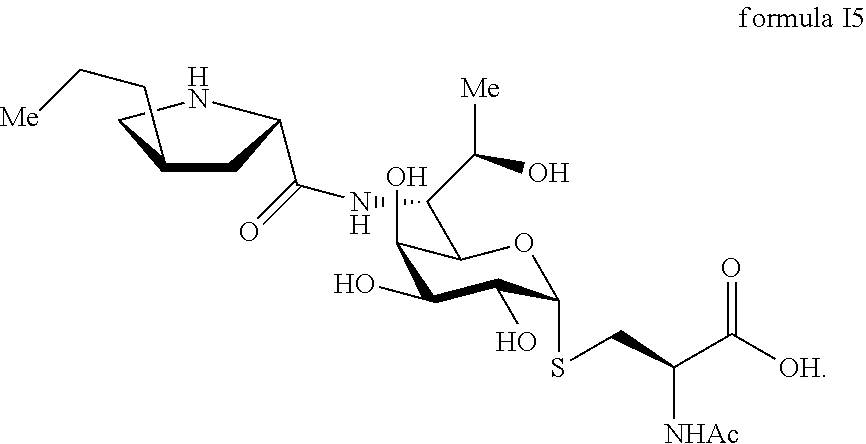
C00016
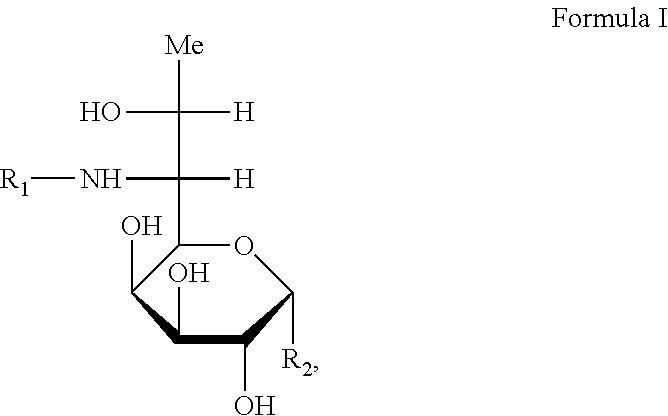
C00017
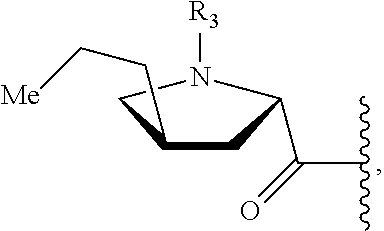
C00018
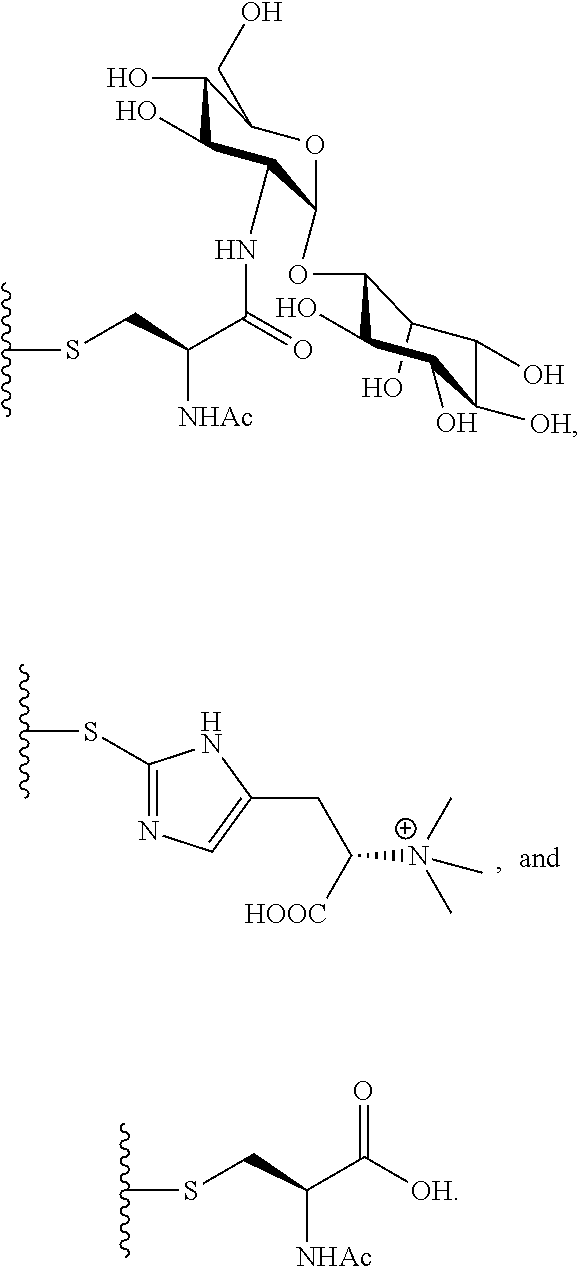
D00000

D00001

D00002

D00003

D00004

D00005
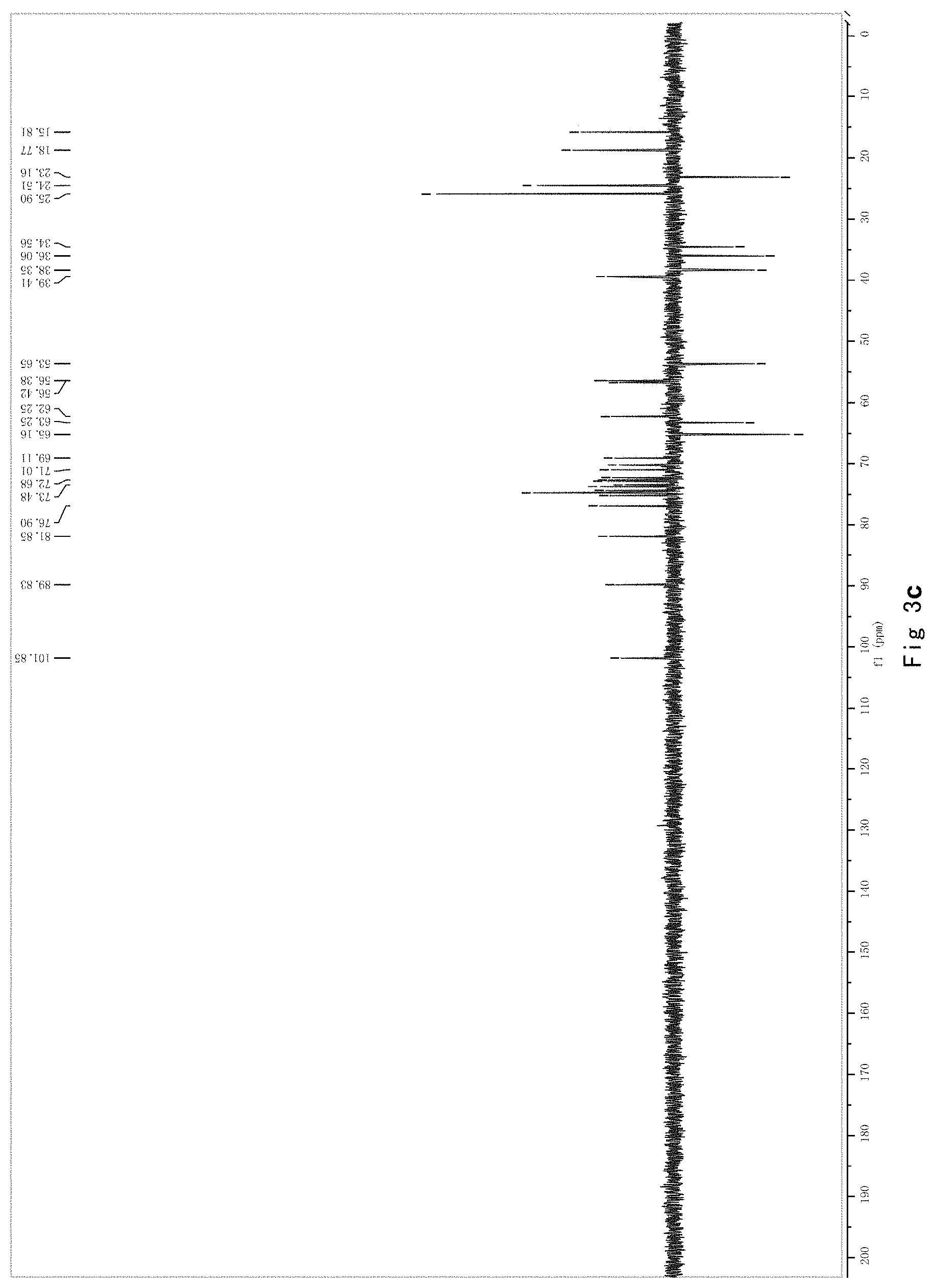
D00006

D00007
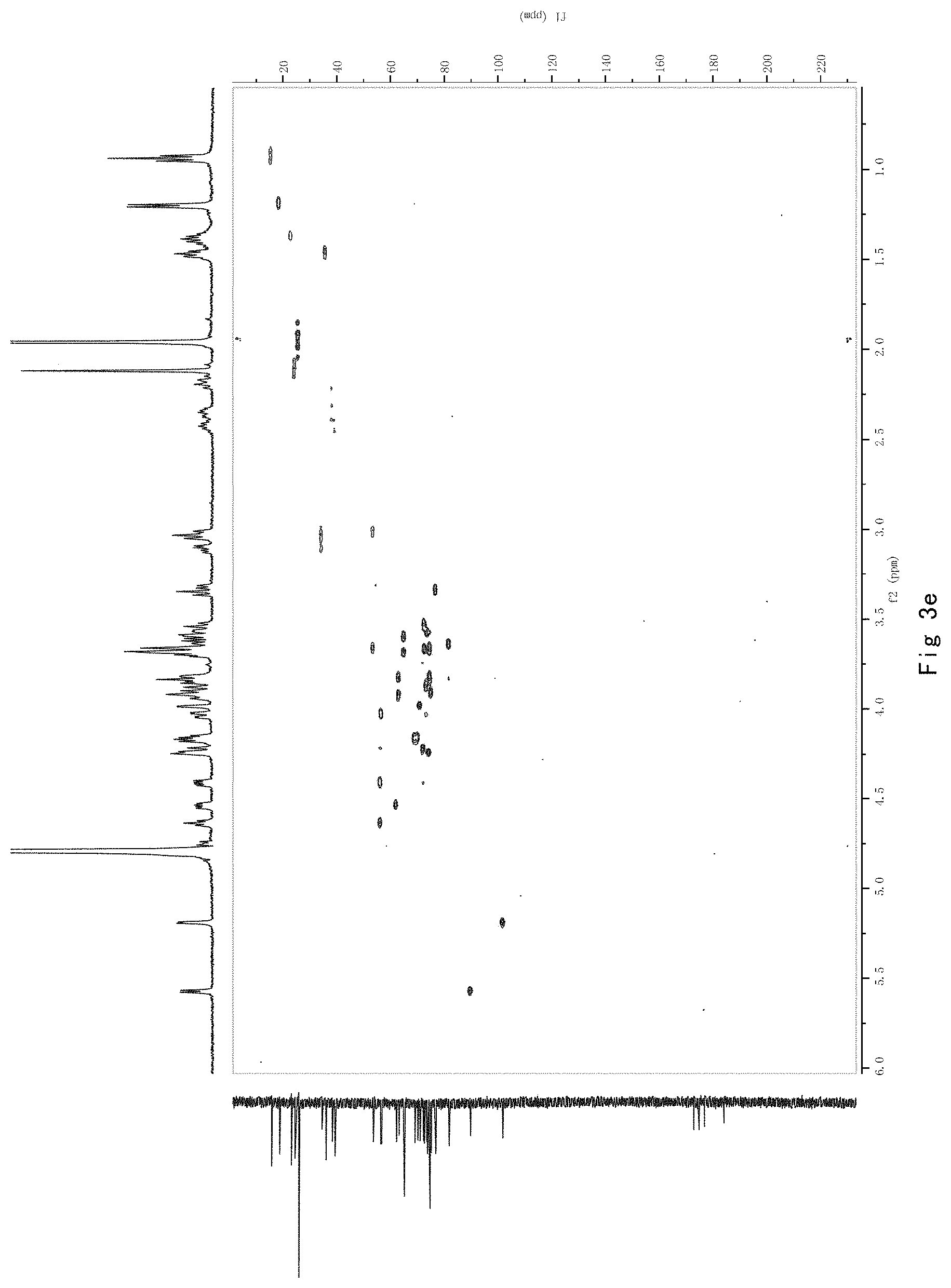
D00008

D00009

D00010
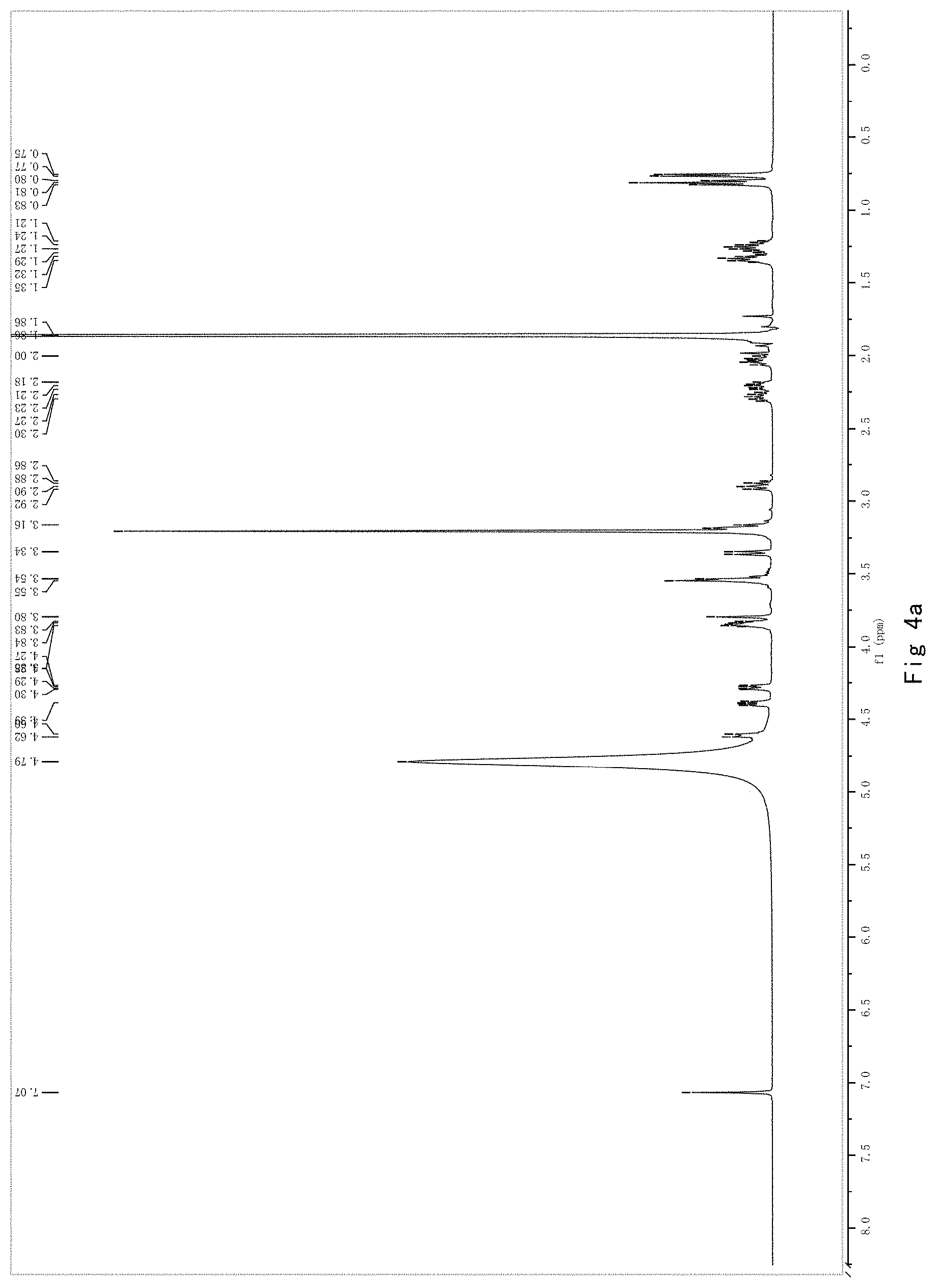
D00011

D00012
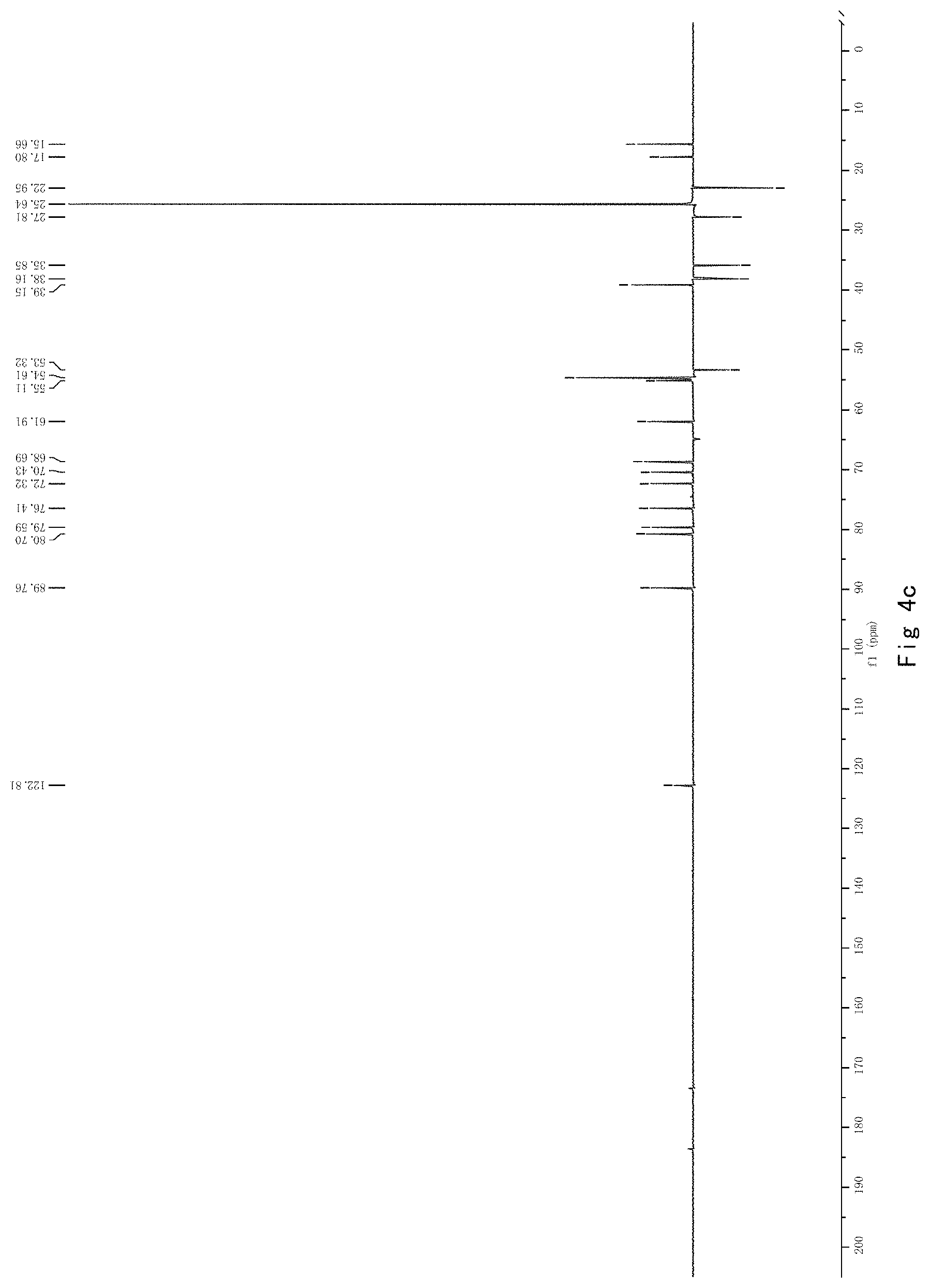
D00013

D00014

D00015

D00016
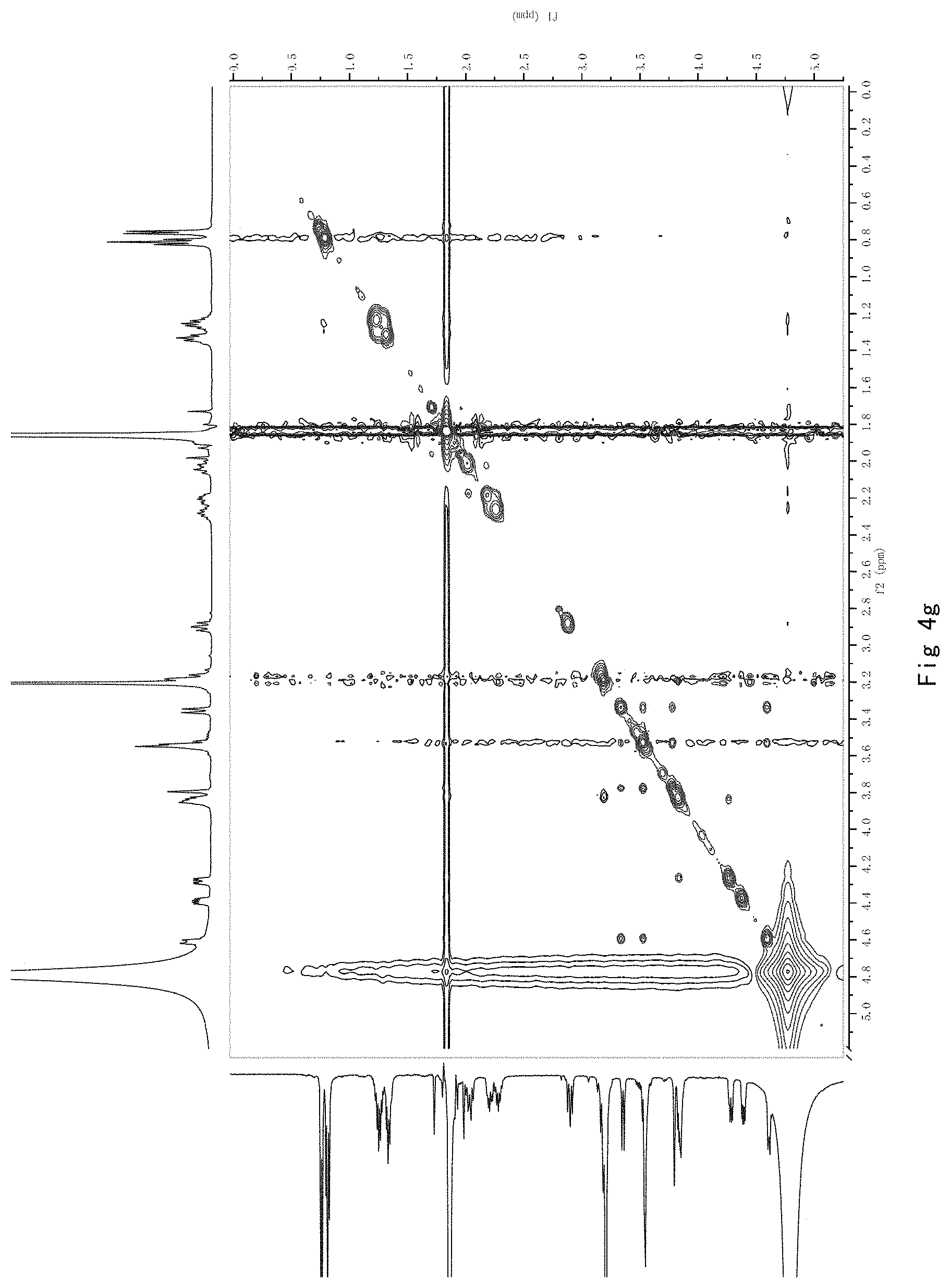
D00017

D00018
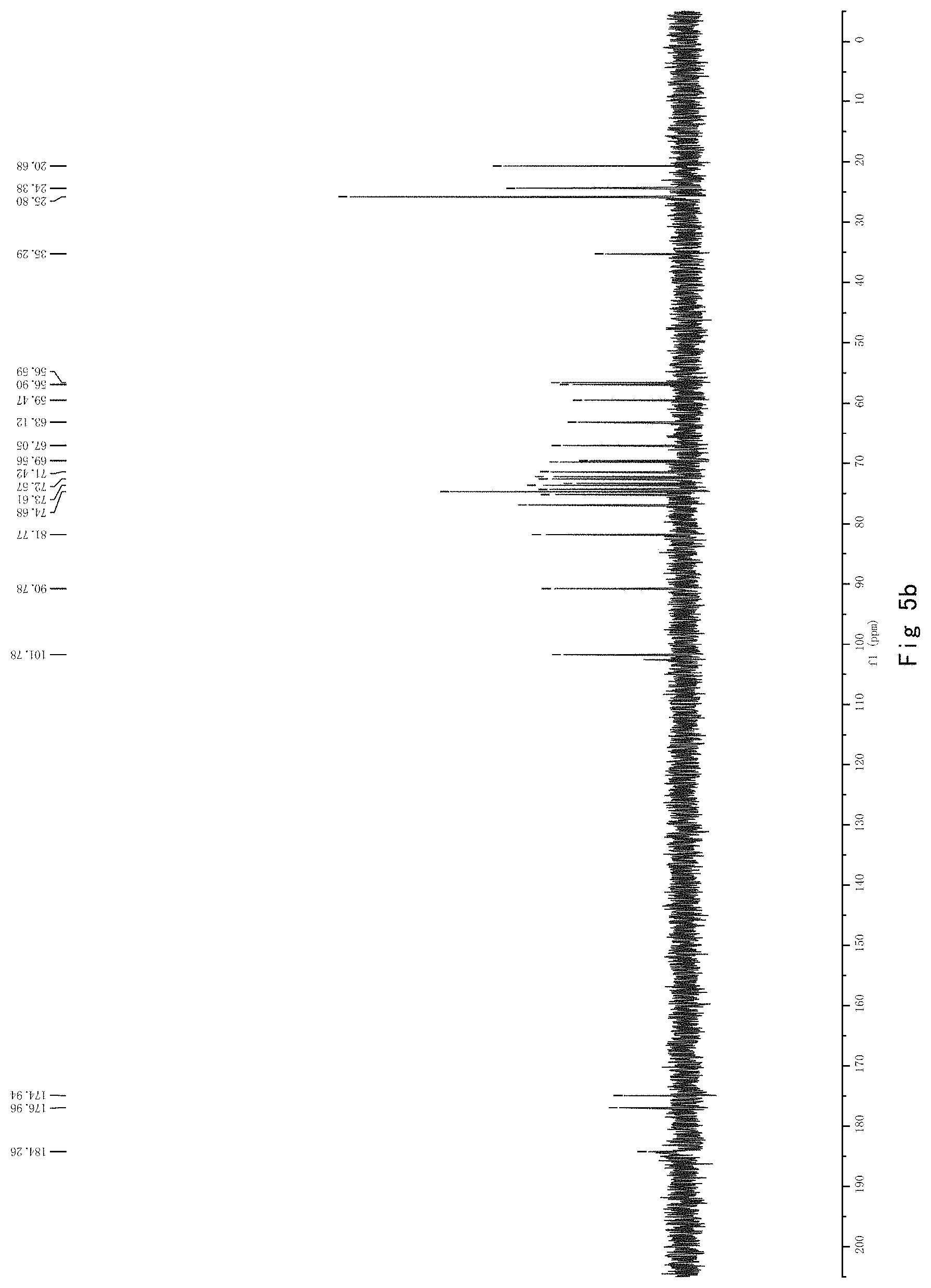
D00019
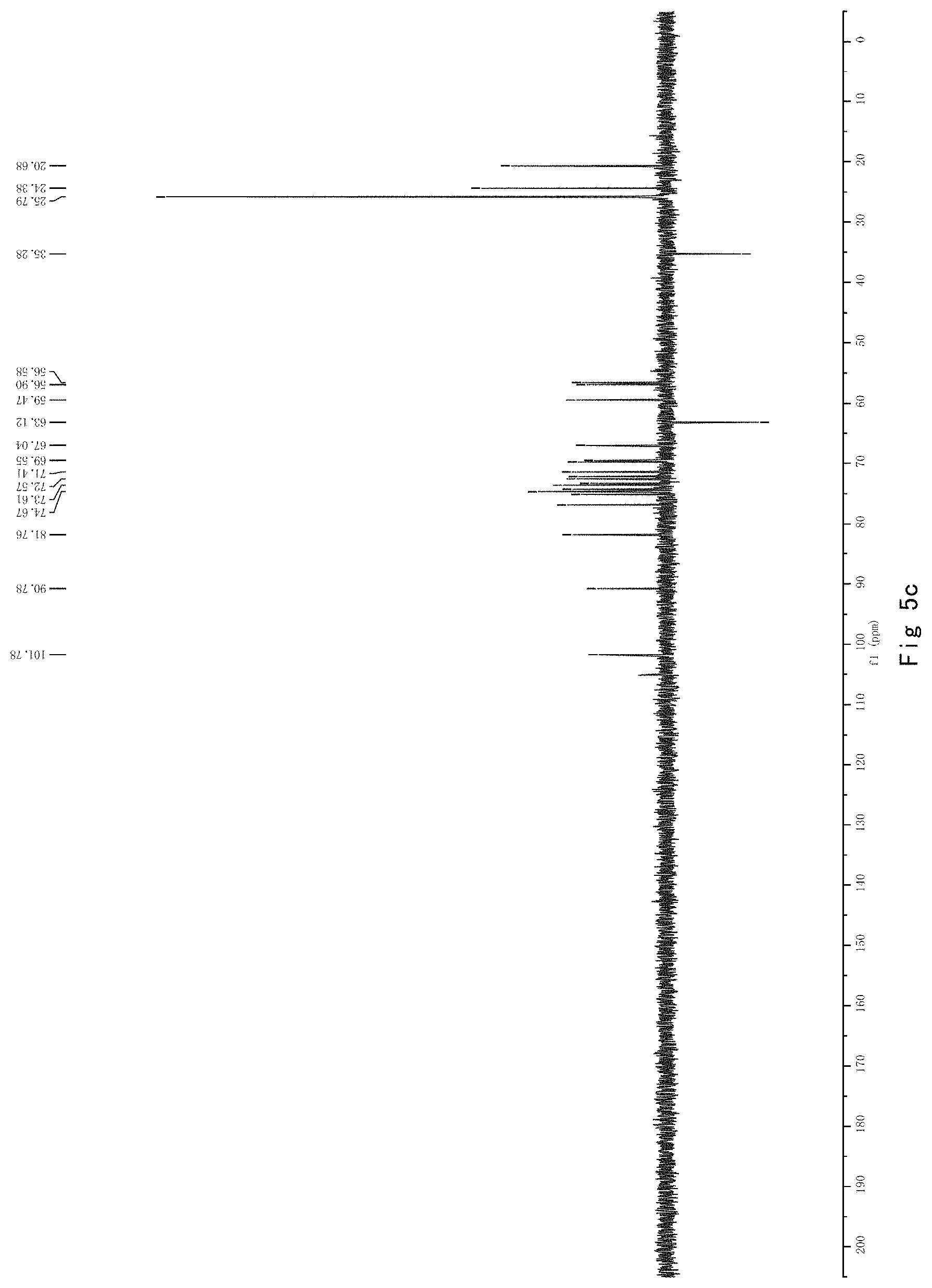
D00020

D00021
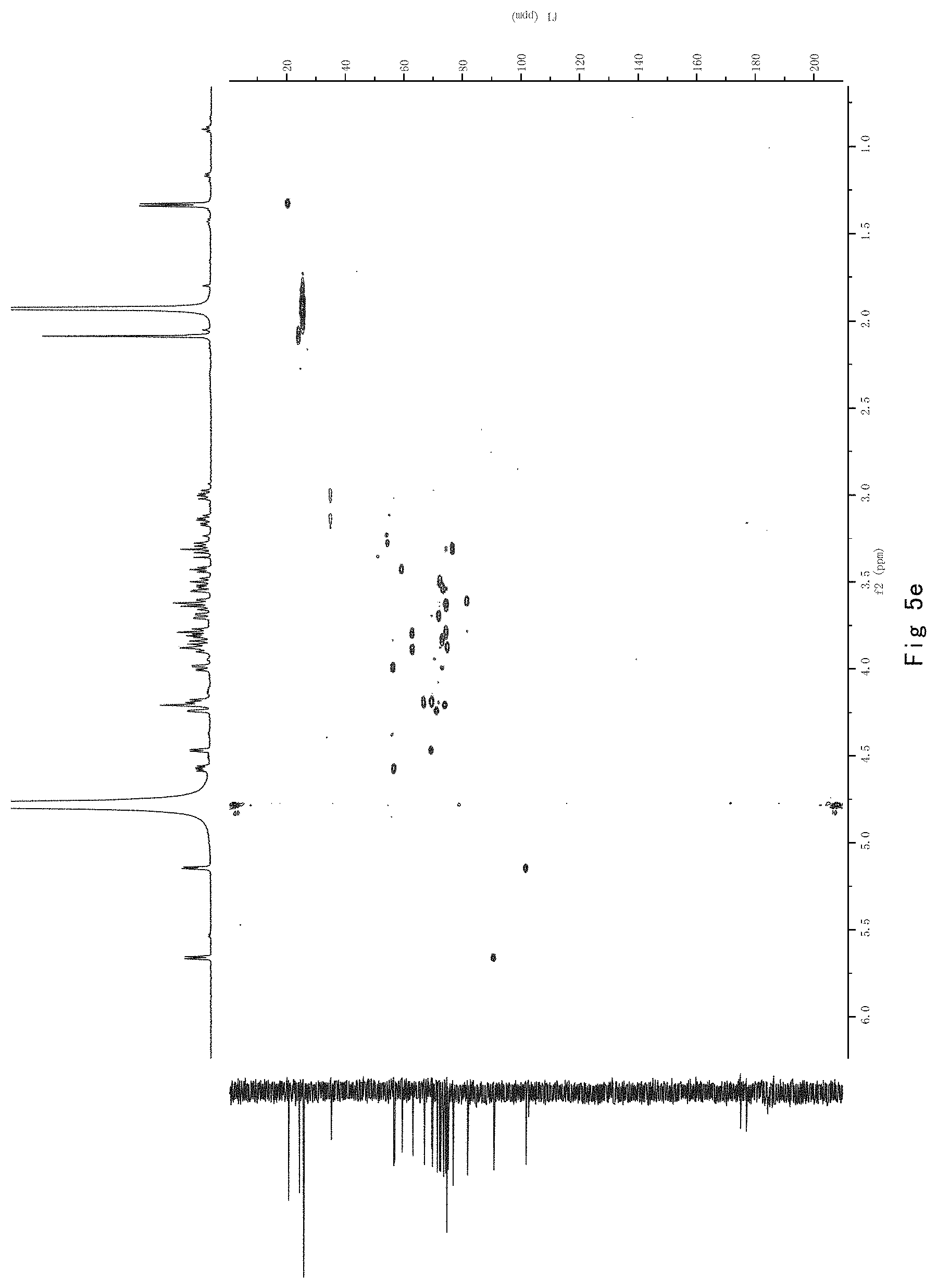
D00022
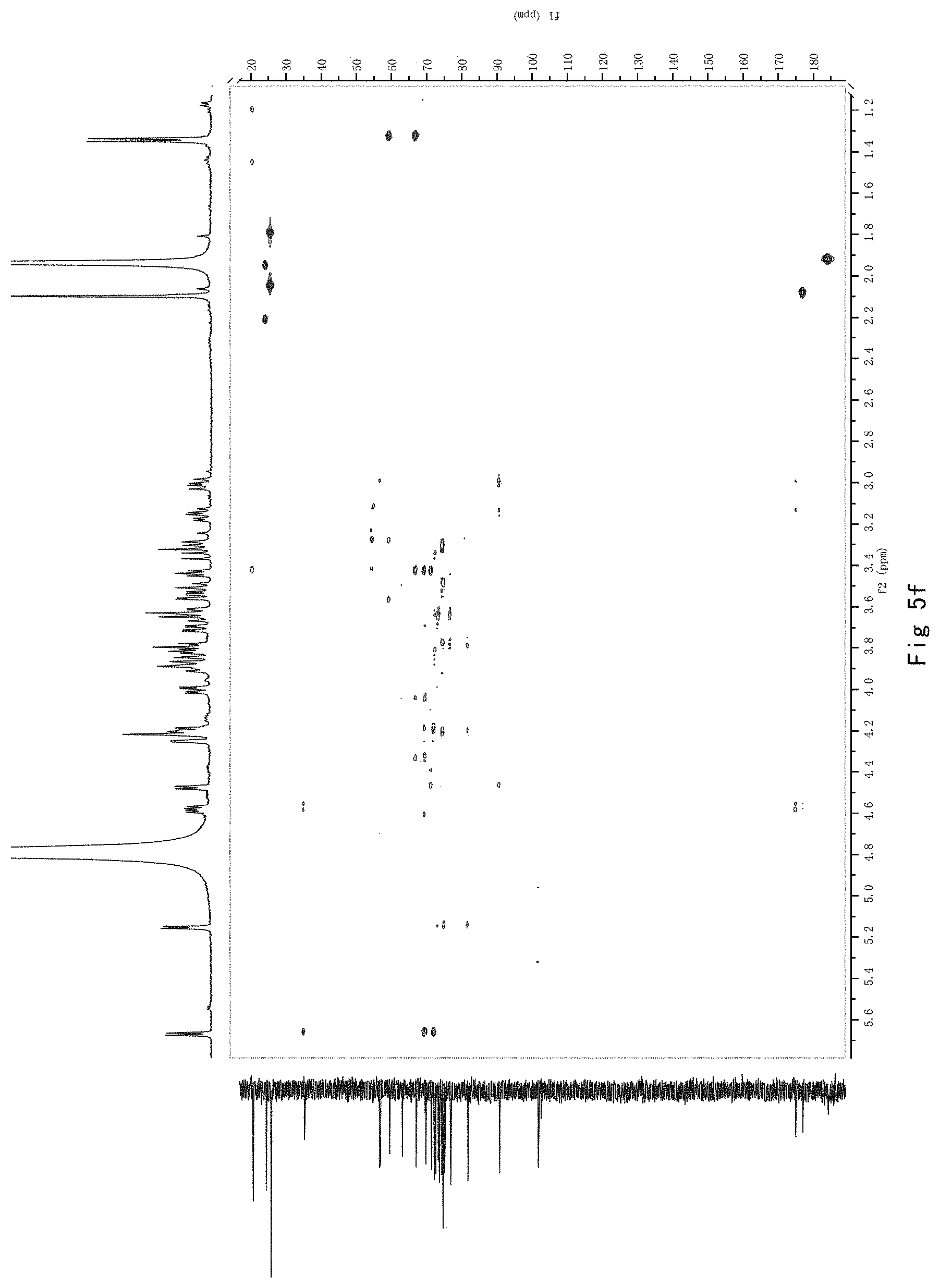
D00023

D00024
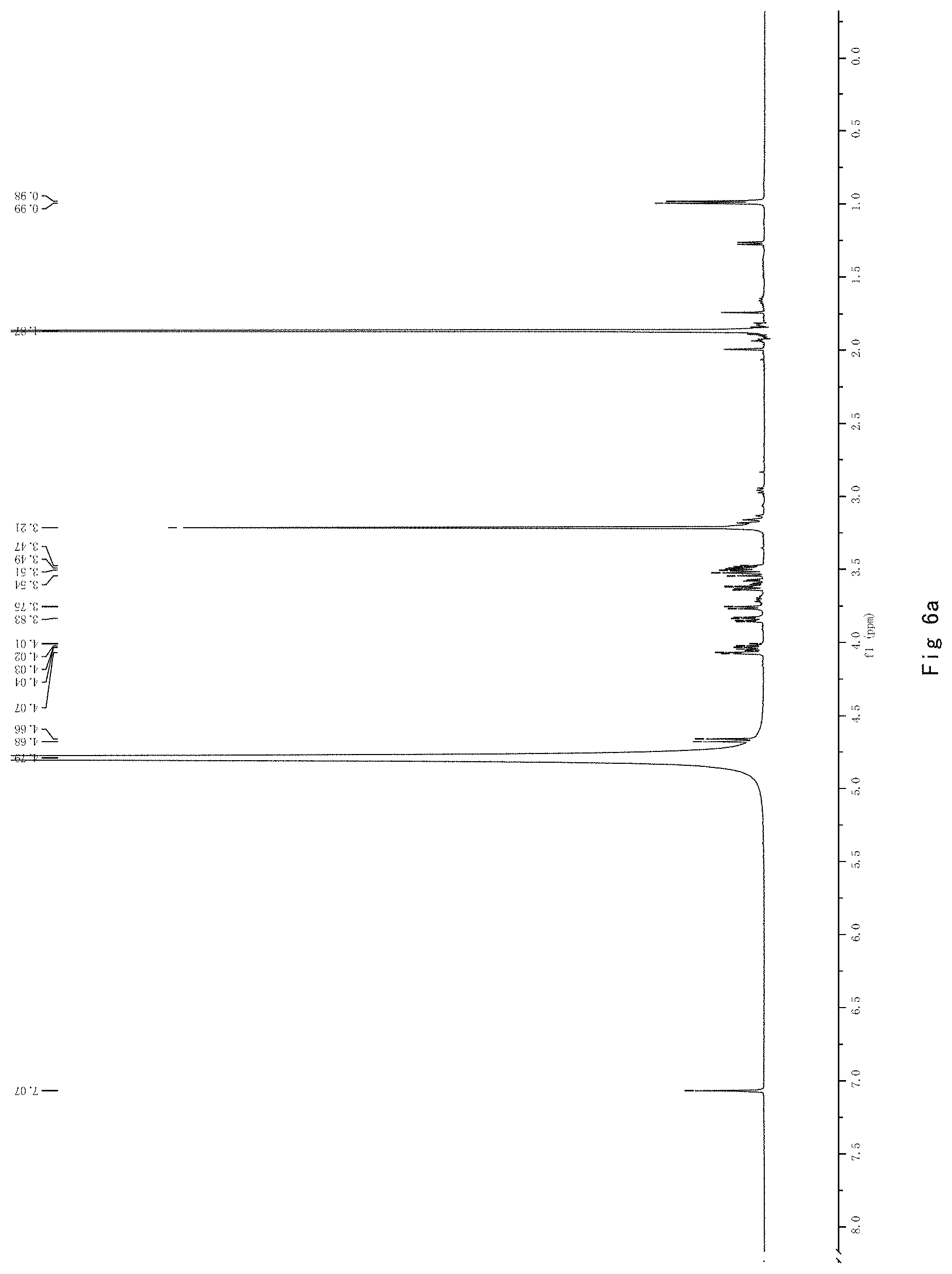
D00025
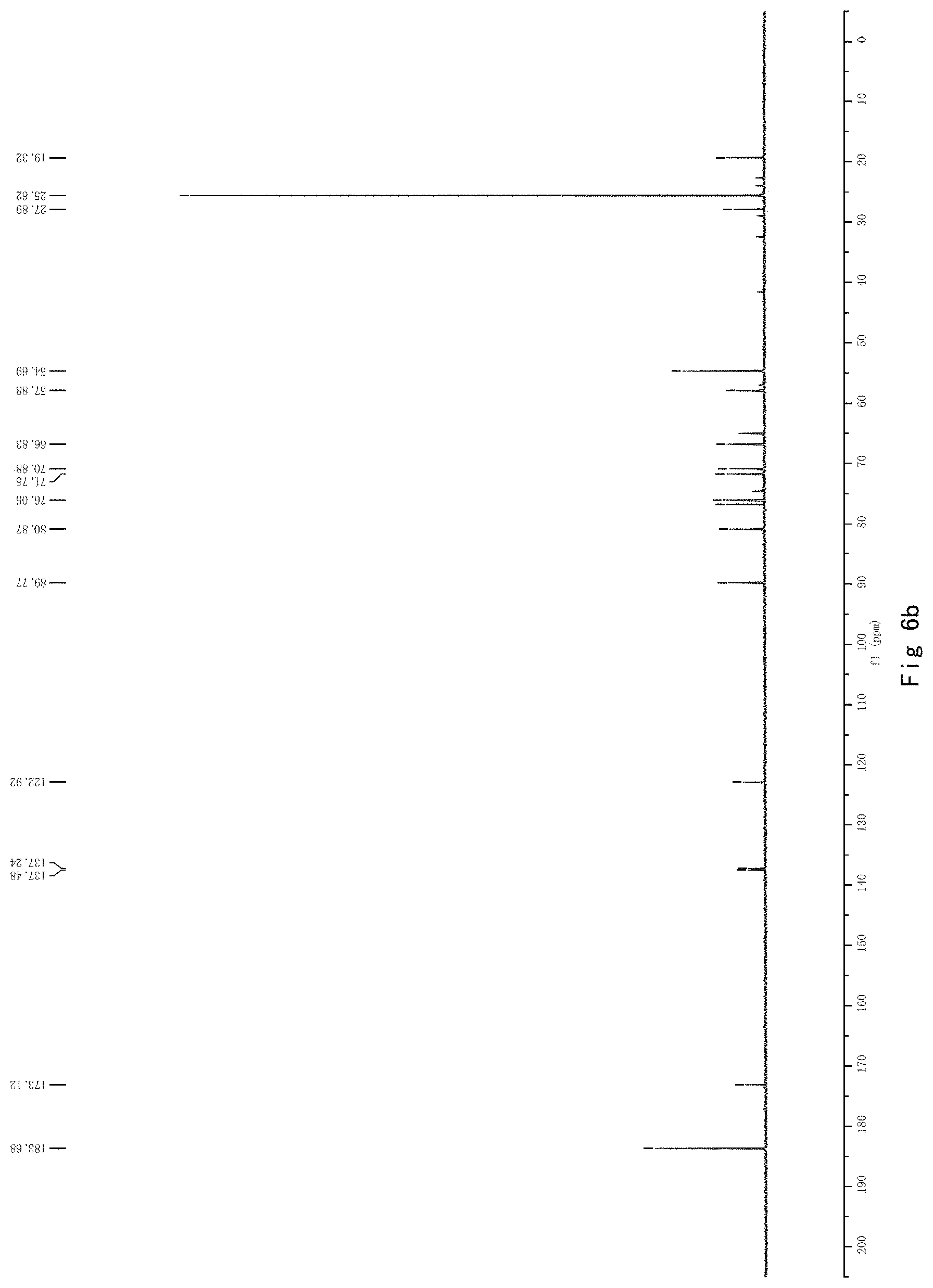
D00026
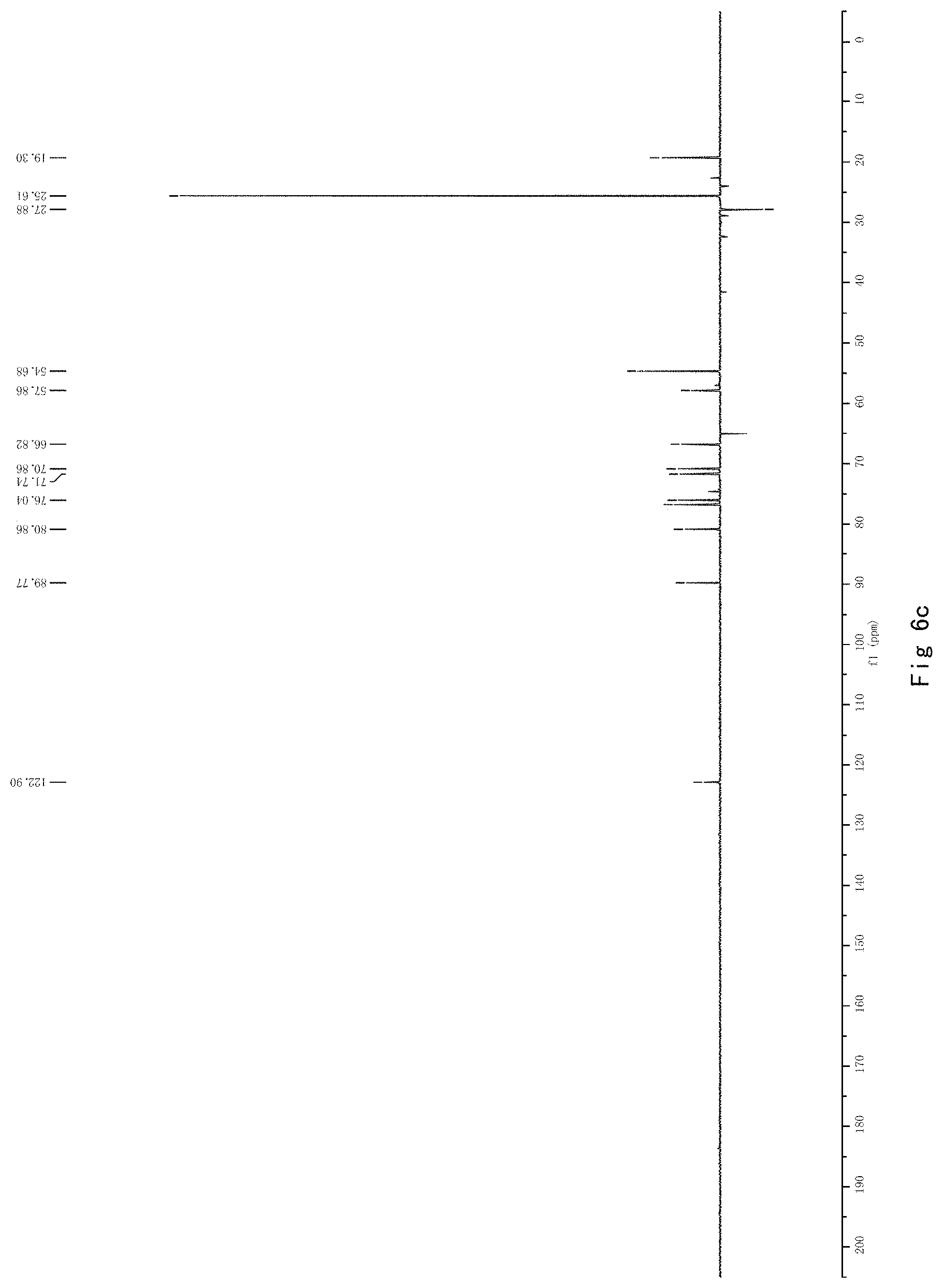
D00027
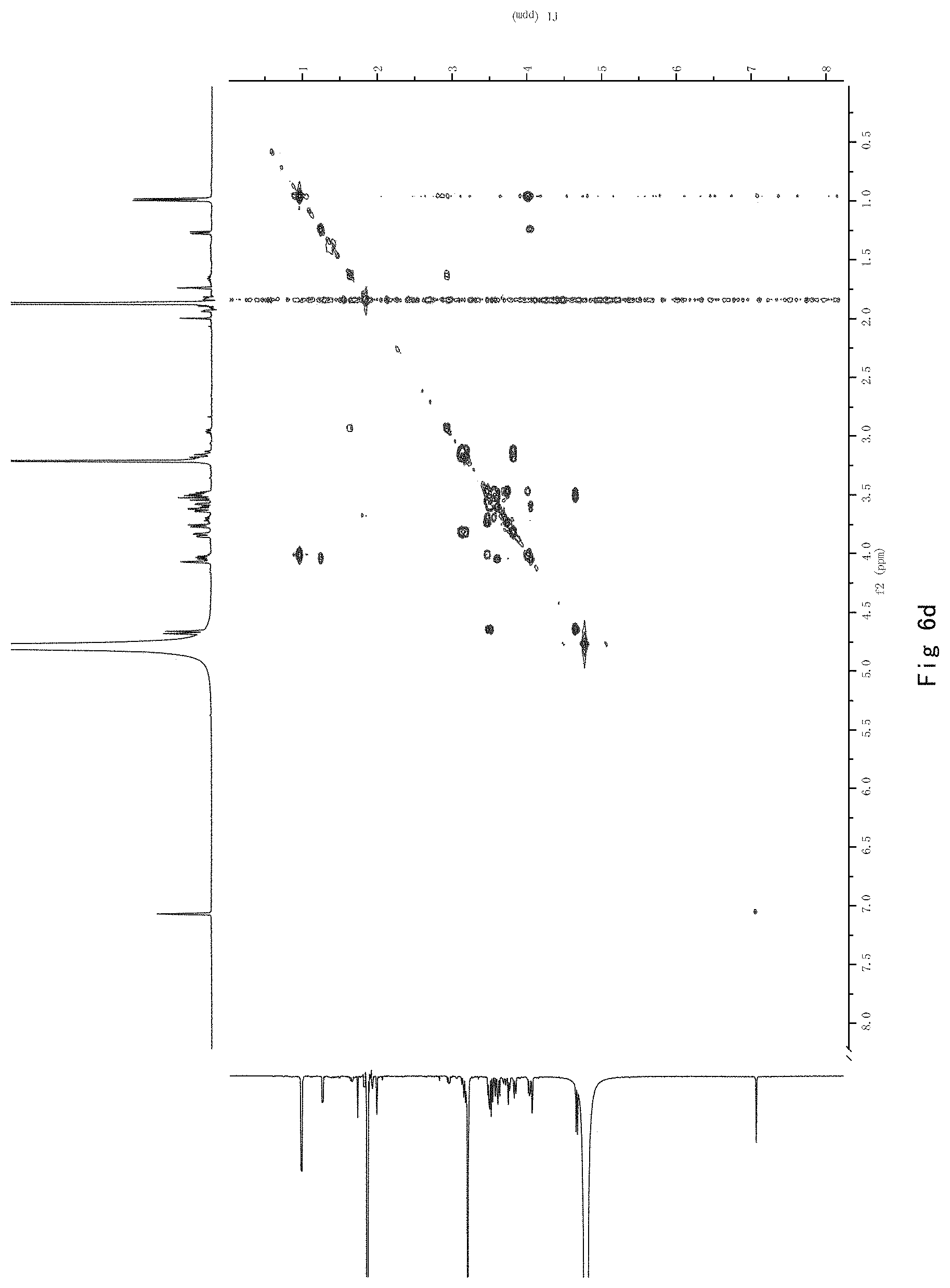
D00028
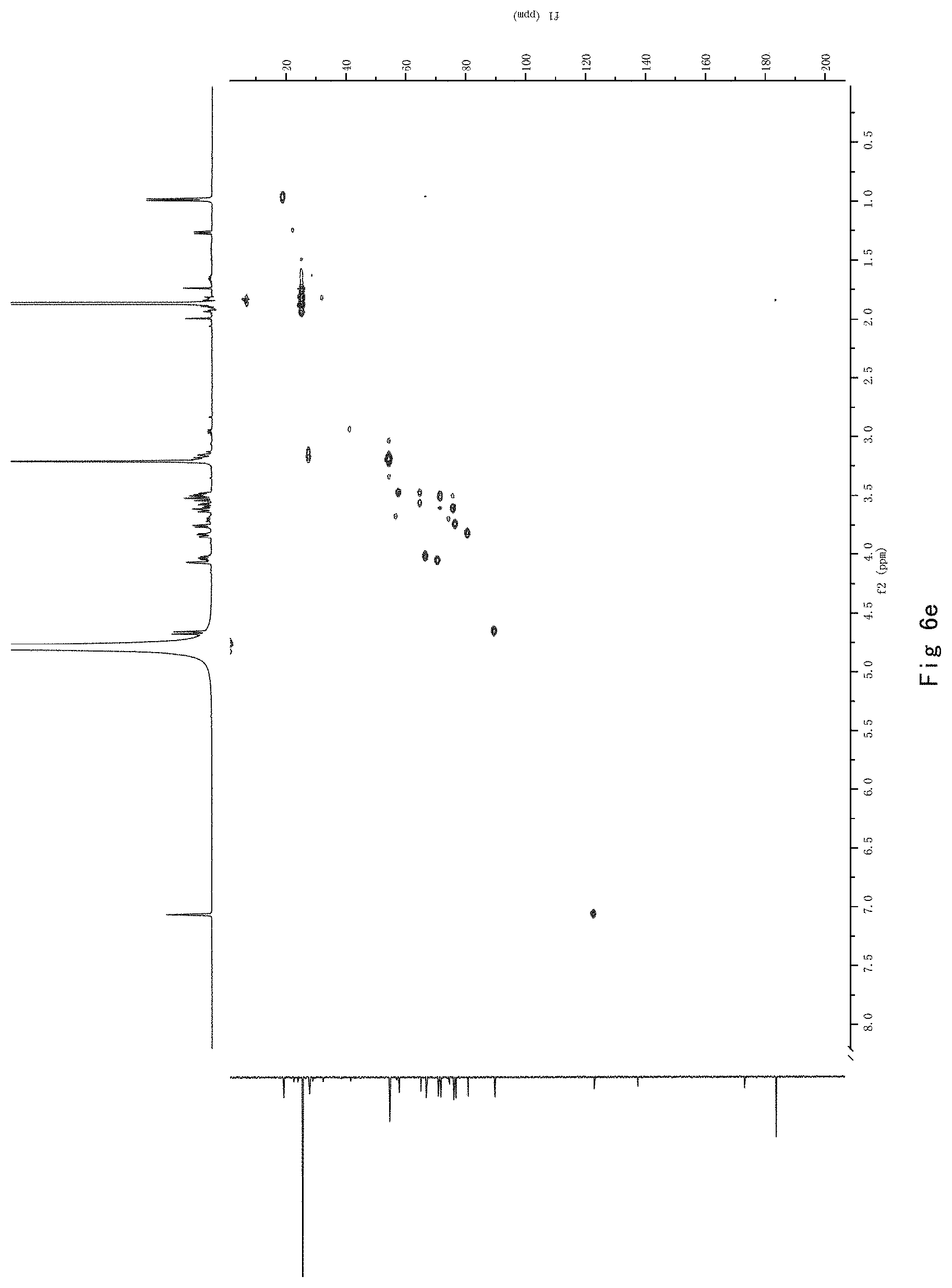
D00029

D00030

D00031

D00032

D00033
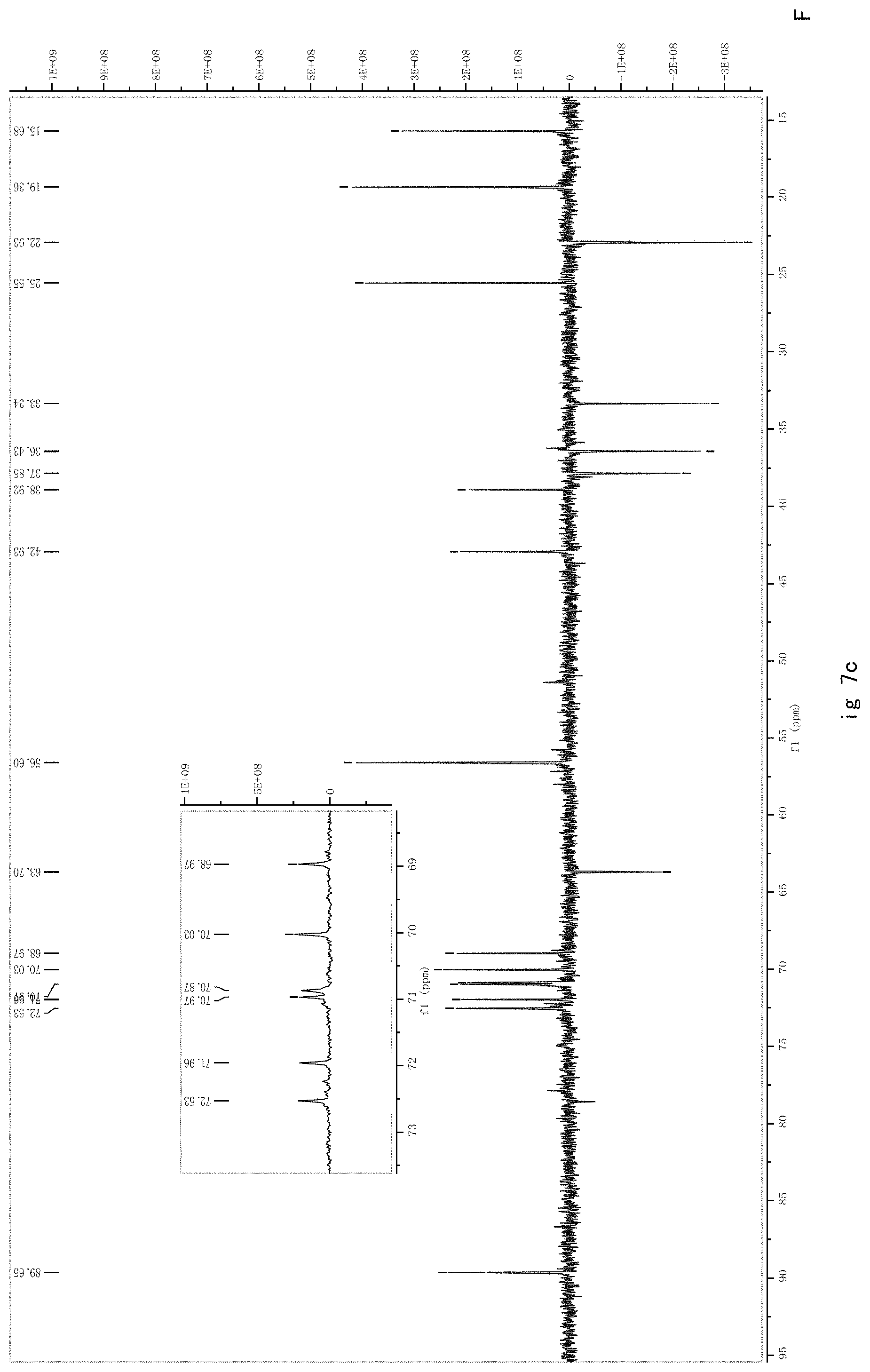
D00034

D00035
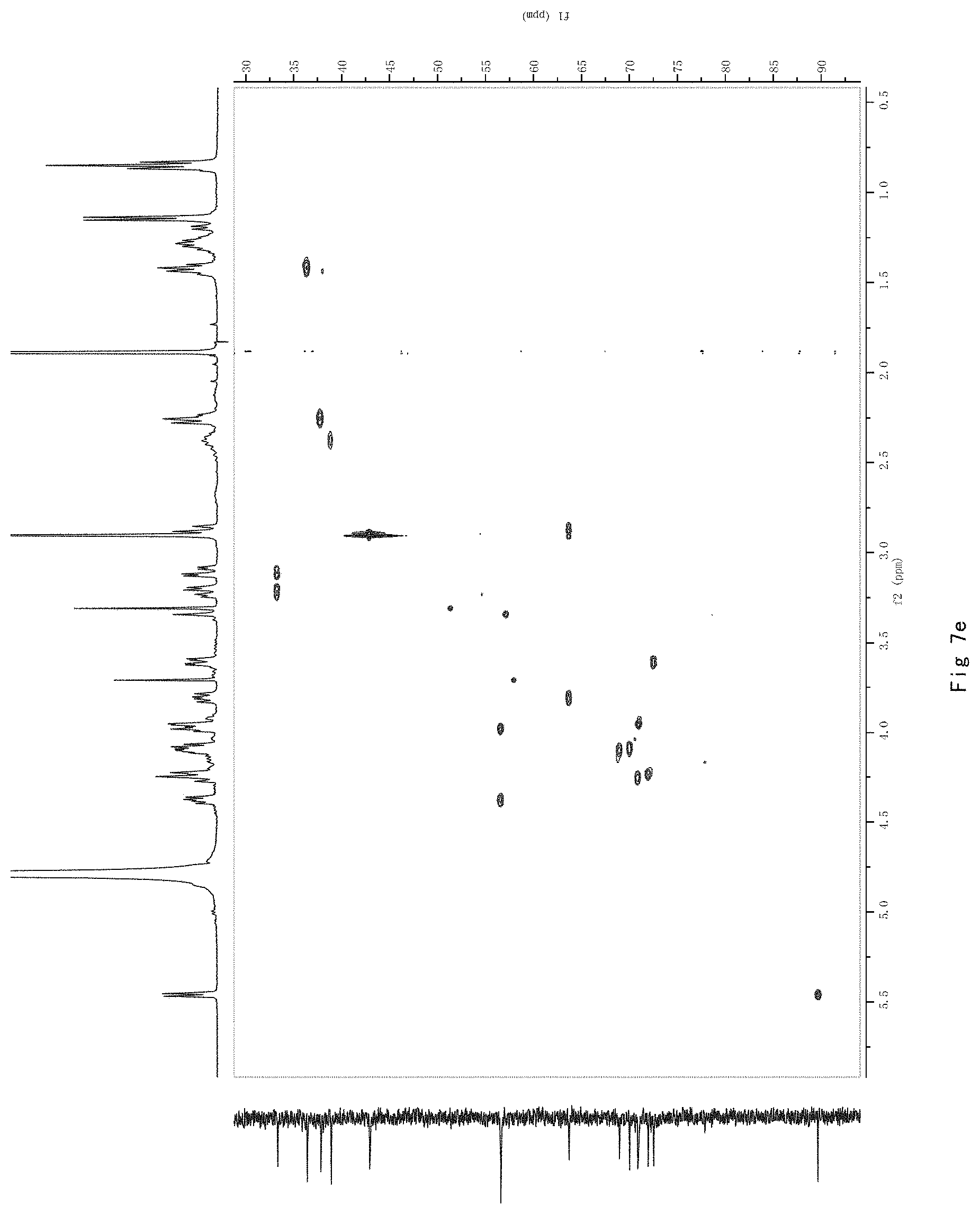
D00036

D00037
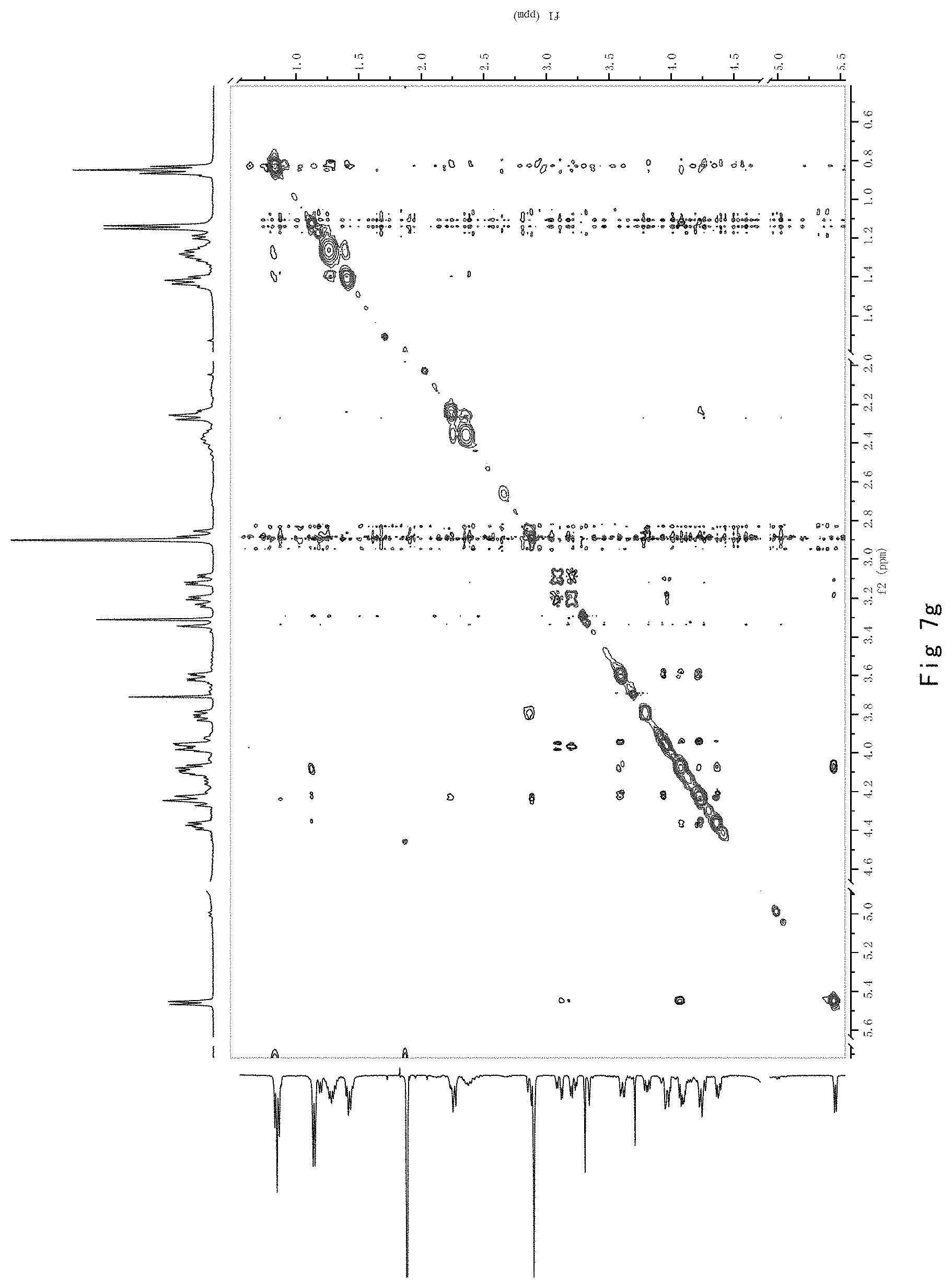
D00038

D00039

D00040
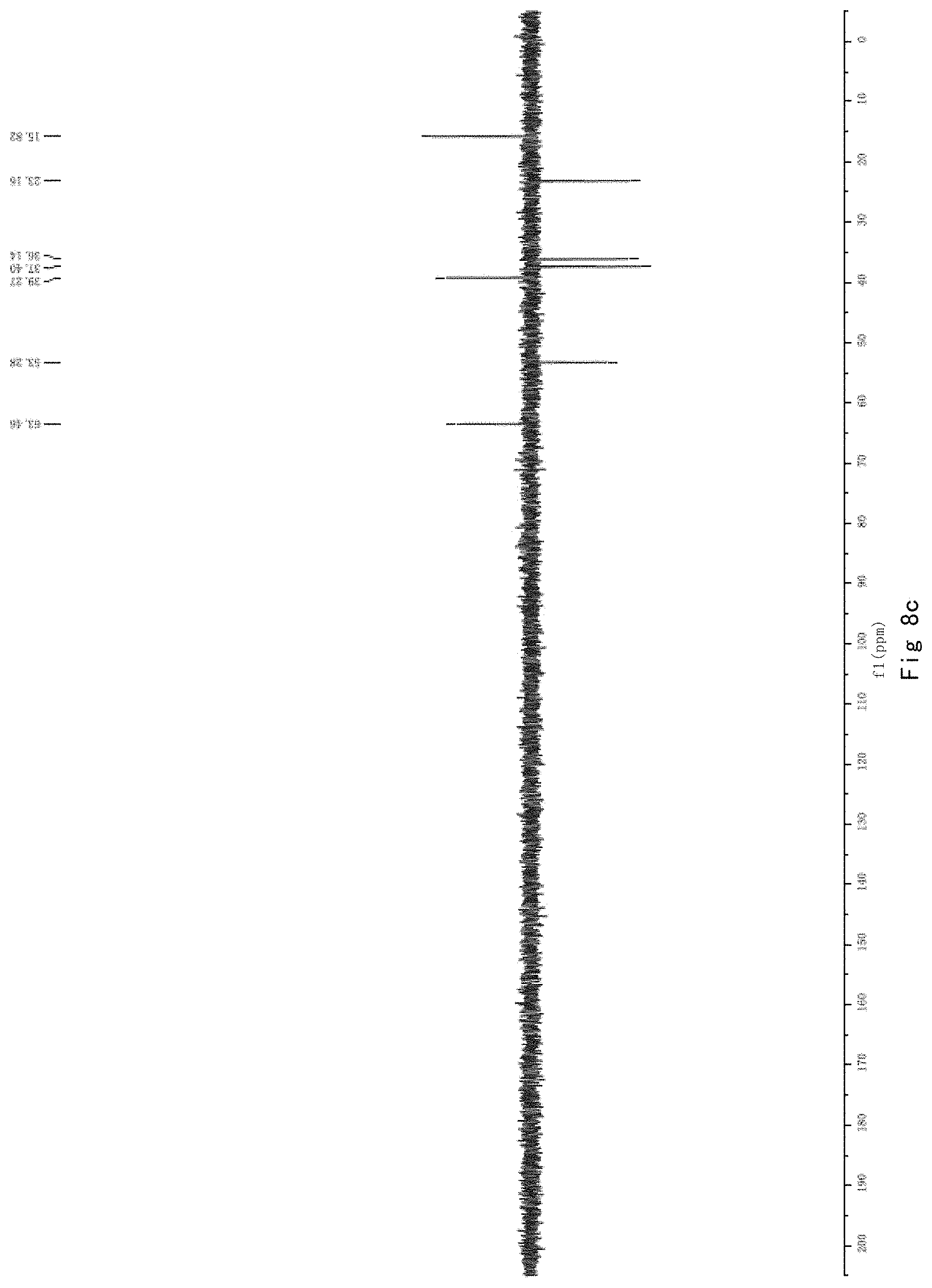
D00041
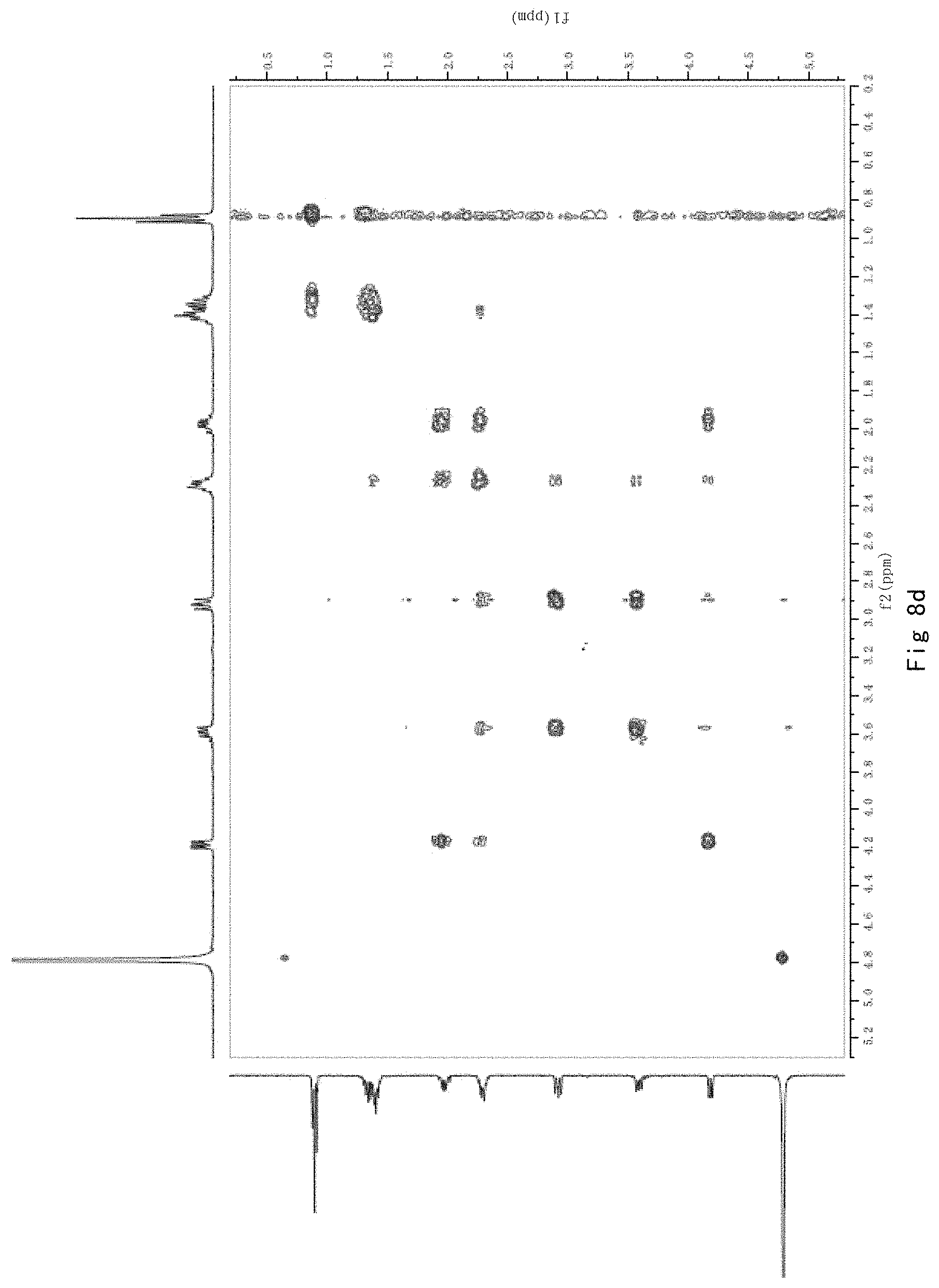
D00042

D00043

D00044
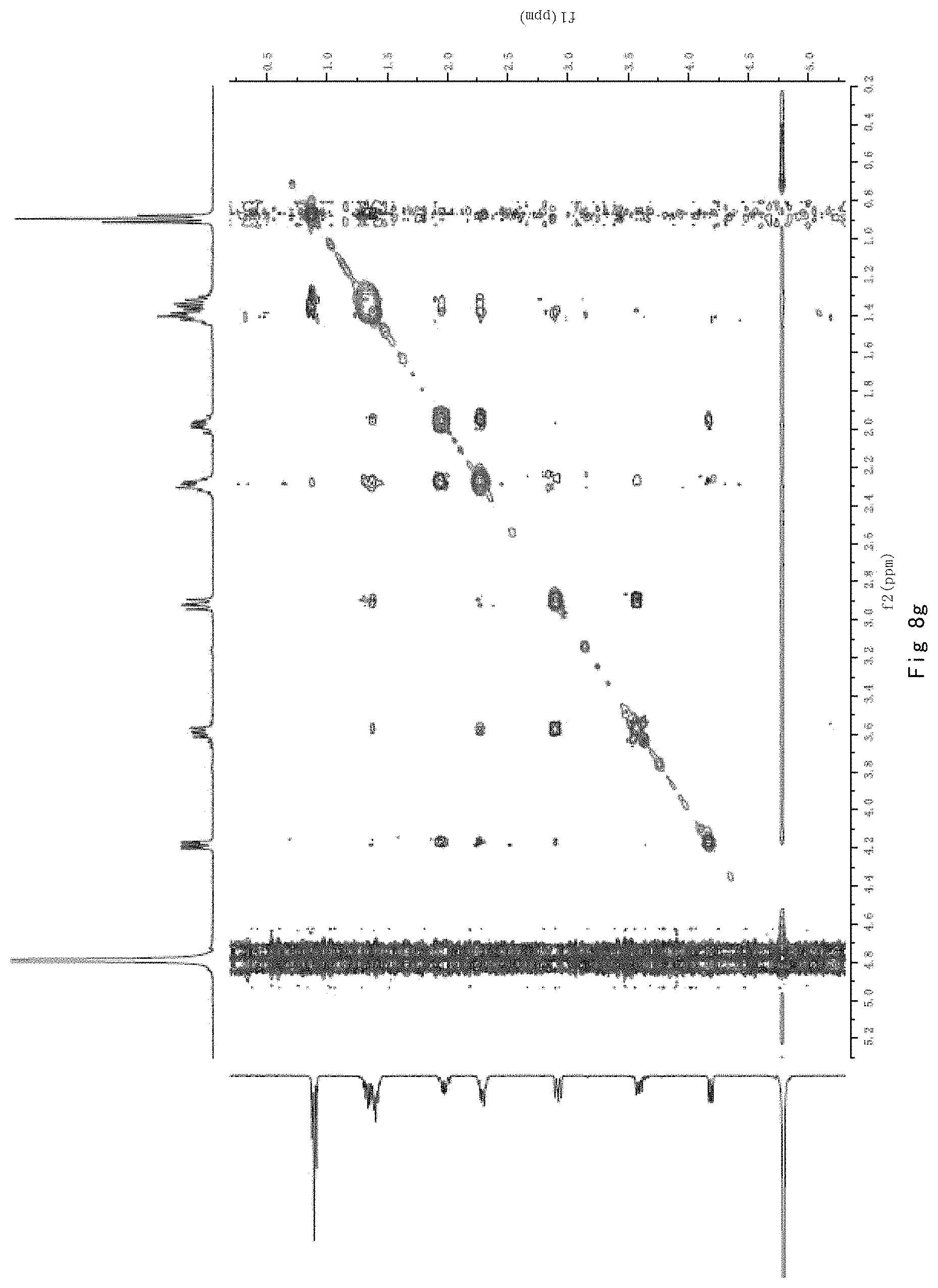
D00045
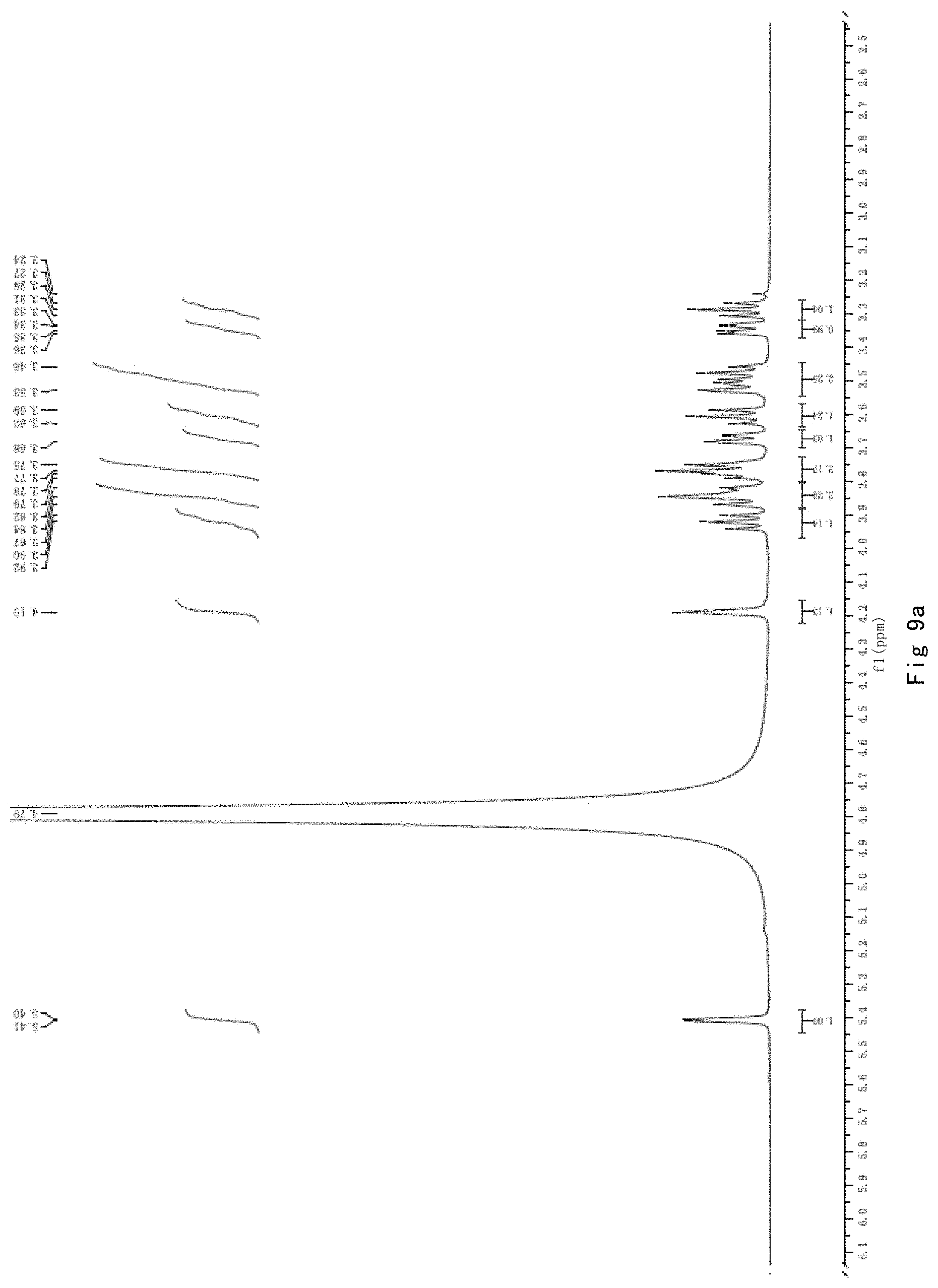
D00046

D00047
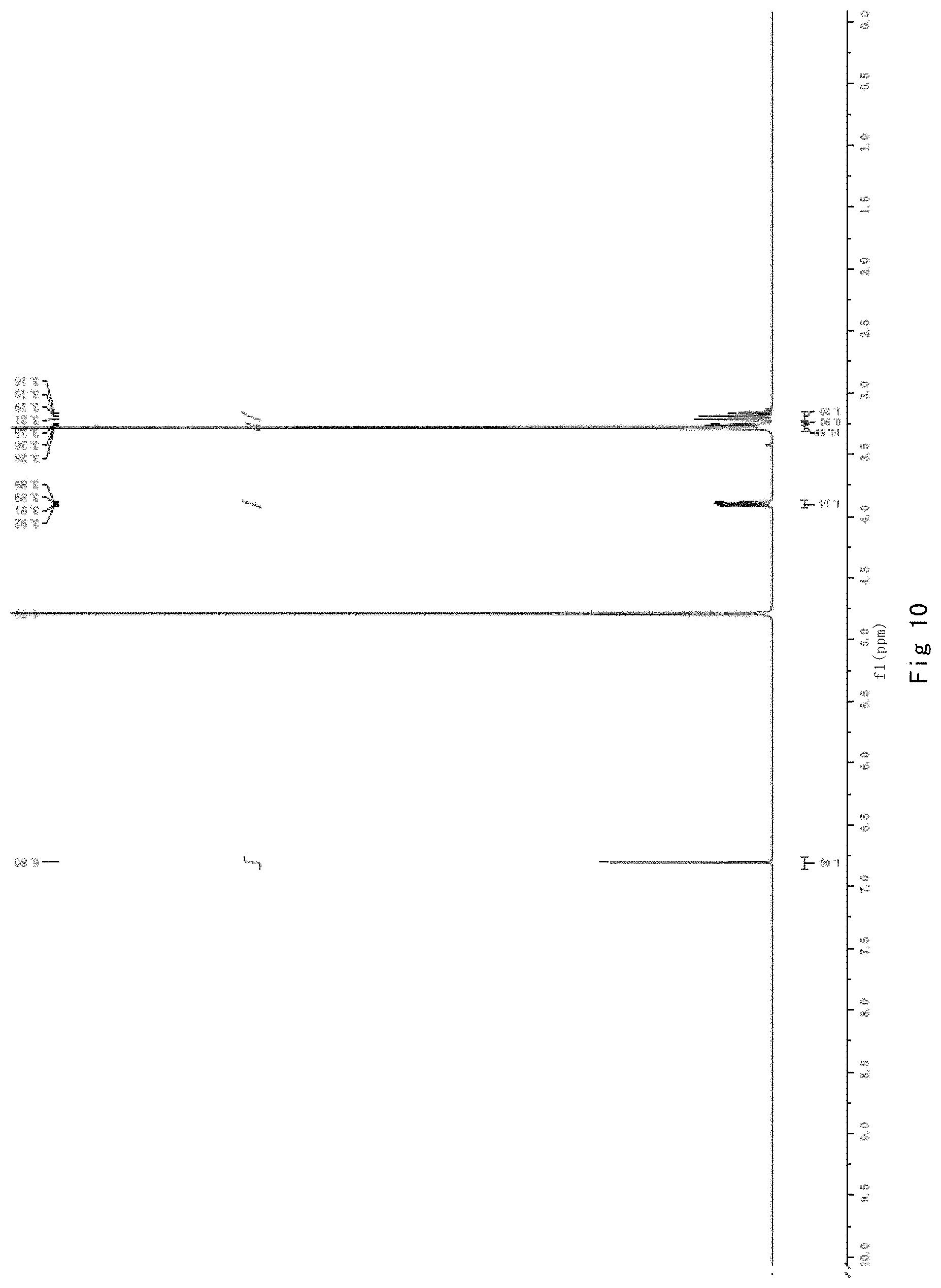
S00001
XML
uspto.report is an independent third-party trademark research tool that is not affiliated, endorsed, or sponsored by the United States Patent and Trademark Office (USPTO) or any other governmental organization. The information provided by uspto.report is based on publicly available data at the time of writing and is intended for informational purposes only.
While we strive to provide accurate and up-to-date information, we do not guarantee the accuracy, completeness, reliability, or suitability of the information displayed on this site. The use of this site is at your own risk. Any reliance you place on such information is therefore strictly at your own risk.
All official trademark data, including owner information, should be verified by visiting the official USPTO website at www.uspto.gov. This site is not intended to replace professional legal advice and should not be used as a substitute for consulting with a legal professional who is knowledgeable about trademark law.